
Pros and Cons of Tourism
Be it Niagara Falls, The Grand Canyon, or the Amazon Rainforest, these places have numerous reasons to attract tourists every year. Tourists love to visit such spots looking for fun, amusement, and even finding peace of mind. Tourism has turned into a thriving industry in many countries. Governments and local communities reap the benefits of tourism in many different ways. But those advantages come with certain risks as well. However, like everything else, there are pros and cons of tourism . You should be taking a closer look at the good and the bad of tourism before you set a vacation schedule alone or with your friends and families.
What are the Pros of Tourism?
In 2021, tourism to Grand Canyon National Park made a significant contribution of $710 million to the local economy, reports National Park Service.
1. Economic Boost
Tourism is a significant contributor to the economy of a country. By attracting tourists, nations can create sustainable revenue streams, generate job opportunities, and boost growth across several sectors. According to a report by NPS, the park welcomed approximately 4.5 million visitors to the Grand Canyon, spending an estimated $710 million in the surrounding gateway regions.
2. Cultural Exchange
Travel can bring people together and provide a unique opportunity to share ideas and experiences. Travelers often have an open mind about different cultures and customs, so they are eager to explore new places. This type of exchange can break down cultural barriers between countries by allowing each party to understand the other's culture better. This exchange of cultural values can be counted as one of the major advantages of tourism.
3. Environmental Conservation
All natural heritages are tourist spots, and people come to admire the view. One of the significant advantages of tourism is that it can help protect and preserve the environment. Local governments can invest the revenue generated by tourism for the betterment of environmentally sensitive regions and areas with fragile ecosystems.
4. Improved Infrastructure is Among the Pros of Tourism
With the influx of tourists, countries can consider upgrading their infrastructure to accommodate visitors' needs. This includes constructing new airports, roads, accommodations, and public facilities such as parks and museums. This positive change can be felt both by the tourists and the inhabitants.
5. Global Recognition
Tourism is an essential part of many countries economies, and it can also provide significant global recognition for the destination. A well-designed tourism strategy that attracts a high volume of international visitors can bring in foreign money, create jobs, and help to develop infrastructure. It also raises awareness about an area, leading to increased interest from the rest of the world.
What are the Cons of Tourism?
Besides the positive changes, tourism also has its share of downsides. Most of the cons of the tourism industry are associated with the misuse of natural resources. Some of the other problems with tourism include:
1. Environmental Damage
Tourism can lead to environmental damage in many ways. For example, it can impact water resources through increased water and wastewater production demand. It can also add to pollution by generating emissions from transportation as visitors travel around the area. Additionally, tourists may increase pressure on local land resources, leading to deforestation and loss of habitats for native species.
2. Displaced Communities
Tourism often brings economic benefits to local communities. Still, when done in a way that does not consider the local community's needs and aspirations, it can cause displacement. Communities may be displaced from their traditional lands or homes, pushing them away from the resources they need for subsistence. This can be particularly detrimental if these resources are already scarce or difficult to access.
3. Cultural Erosion
Cultural Erosion is one of the most dreaded cons of tourism. A tourist destination with a distinct local culture is prone to changes due to the influx of tourists. The more tourism activities are higher the chances of community displacement.
This phenomenon is often compounded by the fact that many tourists come from cultures very different to those of the local community, and their presence can lead to a sudden change in cultural values. This rapid transition can significantly damage a community as its members may no longer feel represented or respected.
4. Economic Dependence
The COVID-19 pandemic best explains how tourism can suddenly burden an economy. As the pandemic wiped out all income for many countries' businesses, many had to rely heavily on government support and bailouts as their primary sources of revenue. This has resulted in rising debts due to emergency aid distributions and other fiscal measures associated with relief during this crisis.
5. Overcrowding
Visiting a particular area can harm the environment and local culture as tourism grows. One of the main disadvantages of tourism is overcrowding, which can strain resources, increase pollution, and damage natural habitats.
Overcrowding can decrease the quality of life for residents, as tourists take up public space and resources. It can also affect the health and safety of visitors who may be exposed to increased levels of crime or air pollution.
Conclusion on the Pros and Cons of Tourism
The pros and cons of tourism are complex if you evaluate them thoroughly. It is easy to see that people benefit from increased access to new cultures, experiences, and destinations.
On the other hand, there are real risks associated with tourist activities like over-tourism and the destruction of natural spaces. Therefore, it's up to individuals to assess these impacts on their own terms. It's up to every citizen to become responsible travelers who understand tourism's positive and negative effects.
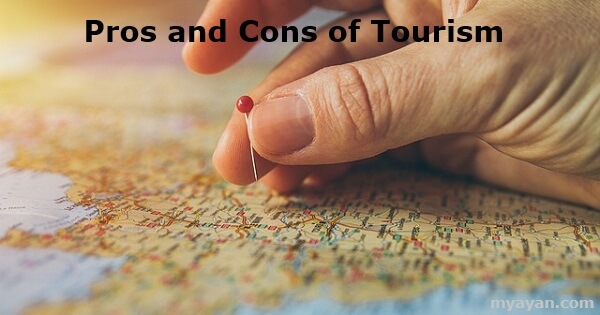
Frequently Asked Questions
What are the cons of tourism.
Tourism frequently exerts excessive strain on natural resources due to overconsumption, particularly in areas with limited resources. It places immense pressure on local land utilization, resulting in soil erosion, heightened pollution levels, loss of natural habitats, and increased jeopardy for endangered species.
What are the pros of tourism?
It fosters job creation, bolsters the local economy, facilitates infrastructure development, preserves the natural environment and cultural heritage, and works towards alleviating poverty and inequality.
What are the social benefits of tourism?
Tourism brings forth numerous social benefits, showcasing its positive impacts on society. These encompass the preservation of local culture and heritage, the fostering of vibrant communities, the provision of essential social services, the promotion of cultural and artistic commerce, the revitalization of customs and art forms, as well as the safeguarding of our precious heritage.
Who does tourism help?
Tourists contribute to the local economy by spending their money, leading to job creation and economic growth. This support is particularly crucial for small businesses, which often struggle to generate substantial profits.
What's your reaction?
Quick links.
- » Home
- » About us
- » Contact us
- » Post Article
- » Privacy policy
- » Terms and Conditions
- » Health and Wellness
- » Education and Communication
- » Computers and Electronics
- » Personal Care and Style
- » Travel Updates and Tourism Guide
- » Finance and Business Sector
- » Food and Entertainment
- » Home and Garden
- » Automobiles Sector

Tourism: The Advantages, Disadvantages and How to Properly Travel
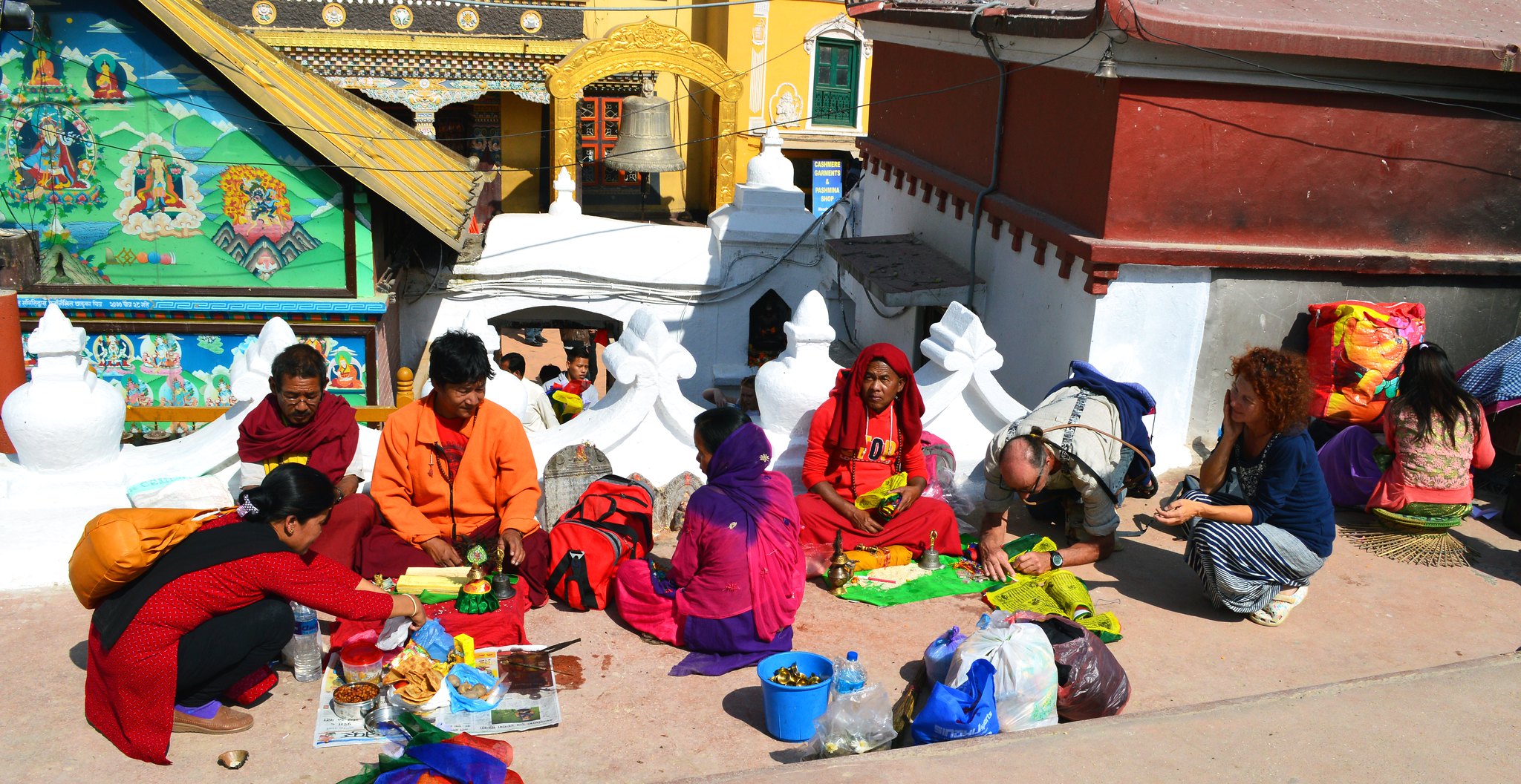
The Advantages
For developing countries, the advantages of tourism tend to be primarily monetary. A large scale tourism industry prevents larger, more harmful businesses from working off the land. Small tourist companies that reign on the land stops large capitalistic corporations from polluting the air or gentrifying people’s homes.
The tourism industry encompasses many different travel areas, which allows the majority of a country’s population to be employed . These employment places include hotels, car rental agencies, restaurants, tour companies, souvenir shops, and equipment shops, among others.
Profit earned from tourism can be reinvested into the country for better infrastructure, education, funding conservation efforts and creating more responsible ways of touring. Without tourism, many countries would not have the same level of access to education and infrastructure. Moreover, tourism allows hosts and visitors to share cultures and meet diverse groups of people. Through respectful interactions, a broader view of the world from both parties can be achieved. By reinvesting the money earned back into the country, tourism and its attractions can grow, creating a positive cycle for the country.
The Disadvantages
With the way the tourism industry is currently run, the disadvantages of tourism may greatly outweigh the advantages in a country. The first factor to take into consideration is environmental damage. When a country has a high tourist attraction, the number of people occupying a space increases immensely. As a result, the release of carbon monoxide gases can increase due to plane and car use affecting the country’s environment. Many countries with ancient ruins or natural attractions are also in danger of destruction or erosion with significant foot traffic and human interaction. Additionally, flora and fauna can decrease in areas or change their growth and migration patterns when there is an overflow of humans interact. Foot traffic and continuous touching can also slowly degrade the stability of ancient structures.
One of the advantages breached upon the sharing of cultures. While this is a great interaction of beliefs and customs, it can become destructive to a host country’s culture. One of the ways cultures can be disrespected is through the commercialization of countries’ cultures . When tourism booms, large industries swoop in and sell figures of the cultures’ icons or traditional wear, disrespecting the countries’ indigenous beliefs and can be harmful to the people living there. Moreover, poor behavior from tourists who don’t respect the spoken or unspoken codes of conduct held by indigenous peoples also undermines the sacred beliefs held within the country.
Also, for many countries, tourism is a seasonal occurrence. For people that work in the tourism industry, their jobs are only viable for a certain number of months, and after the season has ended, many are left without income. Many of these jobs also lack the benefits that other sector jobs supply. Tourism workers are often left without insurance or pension. Not to mention, foreign businesses tend to overtake the companies present in these countries, forcing small businesses to shut down. As a result, foreign businesses keep the majority of profits from tourism, while local businesses lose their income. This hurts small businesses and local economies.
As previously stated, the profit gained from tourism is often reinvested into the industry. However, with unequal infrastructure development, the tourism industry can inadvertently sustain itself without aiding a country’s other vital sectors. As such, many countries end up developing tourism hot spots while the rest of the country suffers. In these countries, there are visible socioeconomic gaps between the wealthy and the poor. Focusing mainly on the tourism industry and places of mass attraction leaves disadvantaged communities at risk of financial instability. Moreover, countries solely invested in tourism are vulnerable to quick economic falls as its working sectors are unevenly balanced. If a natural disaster, political unrest or unprecedented pandemic were to strike, the country would lose a massive income, causing an economic recession that some countries may significantly struggle to bounce back from.
Ways to Respectfully Travel
The most important step to being a respectful tourist is to be an educated tourist. Understanding and respecting the culture and the people of the country is vital. By not undermining tourism countries’ culture and beliefs, the people living there will be more welcoming to tourists, and cultures can flourish without fear of commercialization.
Being environmentally conscious is also important to the survival of these countries. Respecting a country’s land and structures preserve the countries’ beauty and keep the land clean and prepped for further development. Many countries are more environmentally strained, so reducing pollution or your carbon footprint in a foreign country can help ease the strain.
Supporting the small and local businesses found in these countries can help keep local communities employed and support the overall economy. As local businesses grow, more people will have the opportunity to be employed outside of the tourism sector, and the economy will be able to grow within itself.
By learning the advantages and disadvantages of tourism, and how one can improve the practice of traveling, the tourism industry will be able to change for the better and support the countries that host people from all over the world.
– Marlee Ingram Photo: Flickr
“The Borgen Project is an incredible nonprofit organization that is addressing poverty and hunger and working towards ending them.”
-The Huffington Post
Inside the borgen project.
- Board of Directors
Get Smarter
- Global Poverty 101
- Global Poverty… The Good News
- Global Poverty & U.S. Jobs
- Global Poverty and National Security
- Innovative Solutions to Poverty
- Global Poverty & Aid FAQ’s
Ways to Help
- Call Congress
- Email Congress
- 30 Ways to Help
- Volunteer Ops
- Internships
- Courses & Certificates
- The Podcast
What is Tourism and its pros and cons elaborated
Advantages and Disadvantages of Tourism: A Comprehensive Overview
Tourism is a crucial part of the global economy, contributing significantly to job creation , economic growth, and cultural exchange. However, tourism also has its disadvantages, including environmental degradation, cultural erosion, and the potential for exploitation. In this article, we will provide a comprehensive overview of the advantages and disadvantages of tourism.
Advantages of Tourism
- Economic benefits: One of the most significant advantages of tourism is the economic benefits it provides. Tourism generates income for local businesses and creates job opportunities for people in the host community. It also boosts the local economy by increasing the demand for goods and services.
- Cultural exchange: Tourism can be an excellent way for people to experience different cultures and ways of life. It promotes understanding and tolerance between different groups and can help to break down cultural barriers.
- Preservation of heritage sites: Tourism can help to preserve heritage sites by providing the necessary funding and resources for their maintenance and restoration. This, in turn, helps to protect the cultural and historical significance of these sites for future generations.
- Environmental awareness: Tourism can promote environmental awareness by encouraging tourists to adopt sustainable travel practices. This includes reducing their carbon footprint, conserving natural resources, and minimizing waste.
Disadvantages of Tourism
- Environmental degradation: Tourism can have a negative impact on the environment , including increased pollution, depletion of natural resources, and destruction of wildlife habitats.
- Cultural erosion: Tourism can lead to the erosion of traditional cultures and ways of life. This is especially true in areas where tourism is the primary source of income, and local communities are forced to adapt to meet the needs of tourists.
- Exploitation: Tourism can lead to the exploitation of local communities, particularly in developing countries where labor laws are lax, and workers are not protected. This includes low wages, long working hours, and poor working conditions.
- Overcrowding: Tourism can lead to overcrowding, particularly in popular tourist destinations. This can result in traffic congestion, longer wait times, and increased noise levels.
Tourism has its advantages and disadvantages, and it is essential to strike a balance between the two. The benefits of tourism can be significant, but we must also be aware of its potential negative impacts. By adopting sustainable travel practices and promoting responsible tourism, we can ensure that tourism remains a positive force for economic development, cultural exchange, and environmental preservation.
Are you struggling with your paper? Let us handle it - WE ARE EXPERTS!
Get started
Starts at $9 /page
Recent Customer Feedback
See more customer feedback.., how our paper writing service works.
It's very simple!
Complete the order form by providing as much information as possible, and then click the submit button.
Select your preferred writer for the project, or let us assign the best writer for you.
Allocate funds to your wallet. You can release these funds to the writer incrementally, after each section is completed and meets your expected quality.
Download the finished work. Review the paper and request free edits if needed. Optionally, rate the writer and leave a review.
The Disadvantages of Tourism – What Happens When Travel is not Sustainable
This post will highlight some of the common disadvantages of tourism, and the negative impacts it can have on destinations when it is not managed in a sustainable way.

Table of Contents
The problem with tourism
In 2019 (pre-COVID), international tourist arrivals grew to 1.5 billion and the industry generated 1.4 trillion USD dollars of tourism receipts ( UNWTO ). It was the tenth straight year of growth, with arrivals continuing to increase each year. The receipts from tourism were even growing at a faster rate than global GDP! Ten years of rapid growth, and in many destinations, limited restriction or control on that growth has left tourism causing some pretty serious damage to the destinations it occurs in. It is only in recent years that sustainable tourism has really become a serious priority for destinations and operators around the world. In many cases, it has been out of necessity, in an attempt to resolve the issues unsustainable tourism has caused over the years.
Now, I love to travel. And this list is by no means designed to try to make anyone stop travelling (COVID has already done that for us…). But I think it is really important as travellers to be aware of the issues we are contributing to. Either directly or indirectly. The negative impacts of tourism are usually classified into three different areas, economic, social and environmental. In this post, I will share four negative impacts tourism can have in each of these areas. This list is by no means exhaustive, and there are (unfortunately) many other disadvantages of tourism. But the idea of this post is to highlight the problems with unsustainable tourism.
Economic disadvantages of tourism
It might seem hard to believe that there can be economic disadvantages of tourism when it produces so much revenue. But the economic side of tourism is more than just profits. And unsustainable tourism driven by profits only can have dire consequences for the destinations it occurs in.
Over reliance on tourism
Countries can become over-reliant on tourism, with a large portion of their economy and GDP coming from tourism. The situation the world finds itself in now with COVID could not be a better illustrator of the damages of being over-reliant on tourism, a very volatile industry. But even before a global pandemic, this was still an issue. Tourist’s destination preferences change easily, and it doesn’t take much to sway them away from a particular destination. Relying on tourist’s to come back to the same place year after year is risky. Events such as natural disasters, terrorism, health concerns or even just a change in trend can leave countries that were thriving on tourism empty.

Low quality employment
It’s true that tourism generates employment for many. But often these jobs are low paying and seasonal. With employees completing menial tasks with little room for progression or career advancement. It’s not uncommon for establishments like resorts to hire international staff for senior, managerial roles. Usually from more economically developed countries. This leaves local workers stuck in low-level roles, paid peanuts and not guaranteed year-round work.
Tourism dollars leaking out of local economies
A major economic issue with the tourism industry is that of leakage. You can read about this issue in more detail here. But basically, leakage is when a portion of tourism income does not stay in the destination where the tourists visited. Money ‘leaks’ out to more developed countries. This usually occurs through international companies such as airlines and resorts taking their profits back to their headquartering countries. And the local destination and community do not get the economic benefits of the tourists that have visited.

Favoured over other industries
In countries where tourism is a major industry sector, the government can sometimes focus all their energy and funds on the industry. This is often at the peril of other important industries like education, infrastructure and healthcare. This can result in pristine tourist areas, new infrastructure and funding for the benefit of visitors. But what about the locals who live in the country? They might not enjoy anywhere near the same level of development.
Social disadvantages of tourism
The impacts of tourism on society and culture are often contested and deeply complicated. Tourism is just one of many forces that can impact on and change cultures, like globalisation, technology and the media. But there is no denying that tourism and culture and society are inseparable. And there are some major disadvantages of tourism in this area.
The commodification of culture
This is one of the most complex, morally challenging and difficult parts of tourism. It warrants an entire discussion of its own, but in short, tourism can turn culture into a commodity. When traditional culture becomes an attraction, that people pay to see, this raises complicated ethical issues. Often times the culture that is presented to tourists has been adapted to be more appealing to the visitor. Traditional dances and costumes are amended, ceremonies or rituals are shortened, and handicrafts are often made smaller or lighter to fit in suitcases. Only certain elements of a culture are deemed worthy of presenting to tourists. And usually, there is a whole host of problems behind closed doors that tourists are never exposed to or aware of. The culture of a destination as seen through the tourists’ eyes is not authentic at all.
Erosion of culture
This issue is different to the previous issue in that culture can not only be commodified but in many cases lost altogether as a result of tourism. The ‘demonstration effect’ occurs when locals, particularly in traditional or indigenous cultures, observe the behaviours of visitors, usually Western tourists. Exposing the locals to a completely different way of life can lead to changes in their local culture, particularly from younger members of the community. They can begin to mimic and replicate the cultures of the tourists who visit and move away from the customs and traditions of their own culture.

Tourists behaving badly
When people are on holiday they tend to leave their moral compass at home. They are relaxing, want to have a good time, and outside of their usual environment. This can lead to major clashes between tourists and locals, and leave the locals wishing the tourists had never arrived. Whether intentionally or unintentionally, tourists can offend locals and make them uncomfortable in their own homes. Dressing inappropriately, not being aware of culturally unacceptable behaviours and general bad behaviour through the use of alcohol and drugs are just some of the bad behaviours tourists bring to a destination.
Physical damage to built culture and heritage
The Colosseum, Petra, Angkor Wat, the Great Wall of China. Some of the biggest tourist attractions in the world are ancient, historical sites, built centuries ago by different civilisations. These physical representations of ancient cultures are old and fragile. And having thousands, sometimes millions, of tourists tramp through them each year places a lot of strain on the structures and can cause irreparable damage. Not all damage is deliberate on the part of the tourists, but simply having people walk over old stones, touch rock walls and lean on sites can cause irreversible erosion and damage. However many sites are suffering from the deliberate actions of tourists. Littering, graffitiing, taking pieces of the site home with them and climbing on off-limits structures.

Environmental disadvantages of tourism
The negative impacts of tourism on the environment are often the most publicised and talked about. They are easier for us to physically see and quantify, so it can be easier to talk about them. But the impacts that tourism can have on the environment are very complex and can be both direct and indirect. The environment is a complicated web of ecosystems, and one small action can have rippling effects throughout an entire area or species. This is by no means an exhaustive list of the negative things tourism can do to our environment. But some of the issues listed are a bit easier to quantify, where tourism has a direct impact.
Intense use of resources
Tourists, like all people, use resources such as water and energy. However many popular tourist destinations around the world are already dealing with resource scarcities, and tourism can severely exacerbate the problem. Tourism as an industry is a massive overuser of water. Swimming pools and golf courses require a lot of water, and I can’t think of something more synonymous with a holiday than a swimming pool. Tourists themselves tend to use more water than when they are at home, and doing their laundry can consume a lot of water and energy. Cooling and/or heating large hotels and resort complexes and their swimming pools also require a lot of electricity.

Physical damage to natural and marine areas
Tourism takes place in some of the most pristine, yet fragile natural areas in the world. Hiking in the rainforest, snorkelling in coral reefs and climbing alpine mountains are just some of the many activities that can physically impact and damage the natural environment. Vegetation can be damaged having tourists continually trampling over the same paths (and often going off the path too). Corals are damaged by boats and anchors, and tourists (accidentally or not) touching and breaking them. This damage has major flow-on effects on the wider ecosystems and can indirectly impact entire ecosystems and species.

Increased waste, pollution and emissions
From rubbish to sewerage, carbon emissions from transport carriers and water pollution – tourism produces a lot of unwanted waste. In many lesser developed countries around the world, tourism has come on quicker than their local infrastructure can handle, and disposing of the increased waste tourists bring has proven troublesome. Sewerage can end up in local rivers and lakes, and rubbish can be burnt or end up in the ocean. And transporting tourists from point A to B, by planes, in particular, releases a ton of carbon emissions into our atmosphere.
Land use and infrastructure development
Tourists need places to stay, airports for planes to land in and ports for boats to depart from. Natural areas are often cleared to make way for this construction, displacing animals and destroying forests or wetlands. A lot of tourism occurs in coastal areas, and building hotels and resorts right along the coastline can have major impacts on the ocean and surrounding reefs due to erosion and sand runoff. The same goes for constructing marinas and ports, where sand mining and dredging can have disastrous consequences for marine ecosystems.

The disadvantages of tourism: Conclusion
As I mentioned previously, this list is by no means exhaustive and unfortunately there is a range of other disadvantages of tourism. The problems tourism can cause in destinations around the world are complicated and entangled with other deep societal issues such as development, globalisation and colonialism. The purpose of sharing these negative impacts was to highlight that tourism is not a perfect industry. And as travellers, we should be aware of the damage that we can contribute to when we travel. But it’s not all bad news! Tourism, when managed sustainably, has the opportunity to contribute to positive change for our planet. And there are countless examples of the positive impacts of tourism!
What do you think? Have you experienced some of these disadvantages of tourism first hand? Can you think of any other negative impacts tourism can have on the economy, culture and environment? Let me know your thoughts in the comments below.

Sally Rodrick
Sally Rodrick is the voice behind Sally Sees. She has spent 12 months travelling in Mexico and Central America, and has her sights firmly set on South America. Sally helps thousands of readers discover the magic of Latin America. Sharing detailed guides to inspire and equip them with the knowledge they need to plan their own epic adventures in this incredible part of the world.
Leave a Comment Cancel Comment
The comments.
M.K.CHETTRI
It’s nice as you have studied and observed tourists and tourism from the very near…..it’s fantastic. but the thing is that, tourism must go strictly and very sincerely with modern technological facilities keeping in mind about our extremely valuable resources security and conservation.
Thankyou for your comment. I agree, for tourism to be beneficial for all parties involved, and the environment it has to be managed carefully with strict limitations in place to protect resources.
Thanks for simplifying it for me
My pleasure, I hope it was helpful 🙂
Hi Sally, I enjoy your travel blogs very much and appreciate the way you approach your travel experiences. They have been particularly helpful as I am planning a road trip to BCS.
Regarding the negative side of travel, it is much like the negative side of modern life in general. Our collective efforts and our individual choices can have an impact, however it is governments and large corporations who cause the most damage and reap the most profits from industry and development, and also have all the power to either continue down a path of environmental and cultural destruction or make crucial policy changes to preserve our world. Unfortunately, preservation isn’t lucrative but exploitation is. That’s why our environmental crisis is worsening, not improving, no matter how many reusable straws people are buying.
While I firmly believe that as individuals and consumers we must make conscious choices and also “vote with our dollars”, I find it frustrating that we as a collective society of caring individuals have fallen for the greatest psychological trick of industry: that it’s up to us, the consumer, to make sure our world doesn’t get destroyed, while governments and industries continue to knowingly create mass scale destruction, pollution, waste and overdevelopment.
This same problem applies to most areas of modern life, not just travel, and frankly it is extremely distressing. As someone who is very conscious of the dangerous effects of modern consumerism, I am often extremely troubled and sometimes paralyzed by it. So for me it becomes important to live with balance in this regard. I will always live consciously, but I need to be careful not to feel the enormous and distressing weight of these problems squarely on my shoulders alone. Ultimately, industry and government need to be held accountable more so than individuals. Plus, not all individuals are on board with these efforts. Many plainly do not care. Those individuals who contribute most to environmental and cultural destruction aren’t the ones who will be reading blogs like this, or refraining from purchasing multiple homes, or living beyond their share of resources. They don’t care and never will. We need our leadership to change and to lead us all into conservation and preservation.
Certainly we as caring citizens of the planet should live consciously but our small efforts are no match for the unbridled and unregulated industries that are the true source of our worlds demise.
I certainly appreciate the message you are putting forth here and everything you point out is absolutely accurate, but I fear the ones who need to hear it the most won’t be the ones this message will reach.
Thank you for being a conscious and caring citizen of the planet and thank you for your lovely and helpful blogs. Best wishes and happy trails.
Hi Marissa,
Thankyou for your insightful comment. I couldn’t have said it better myself and completely share your sentiment on the situation of our planet.
To be perfectly honest, I try not to think too much about what our governments and large corporations are doing to our earth. It often feels to overwhelming to even comprehend, when it is so far out of our control.
You are completely right in saying that they are the ones that are really doing the damage, and the only ones that have the potential for real change. But for that to happen profit must be sacrificed, and planet must come first. There are small hints of this happening in some places around the world, and I think countries with large tourism industry are amongst some of the first to say no to profitable industries that are detrimental to the environment. Finally they can see the long term condition of the environment is more valuable than a quick financial win in a destructive industry. A pristine environment with rich biodiversity will be worth financially more to tourists in the long term, so there is incentive to keep it that way.
That’s why I think travel can be so powerful. Sure, travelling produces emissions and has its own set of challenges for our environment. But as you say, modern living in any context, at home or while travelling, is damaging by its very nature. I believe pros of travel can outweigh the cons if done right.
It’s a very tough line between knowing that really, as individuals, we have very little power to make meaningful change. But if we swing too far in the opposite direction it turns into an attitude of not even bothering at all. Little steps can have little impacts, and whilst it won’t solve the enormous problems our earth is facing – it can’t hurt to do the right thing where and when we can.
Keep exploring our beautiful world, and take on board the issues you can solve. All the best, Sally x
Sinadi Aanya
This is grate I got a lot of information thank u so much 🙏🏻☺️
I’m so glad it was helpful Sinadi! All the best, Sally
Tourism; Pros and Cons, Facts and Environmental Impact.
- by Ahsen Soomro
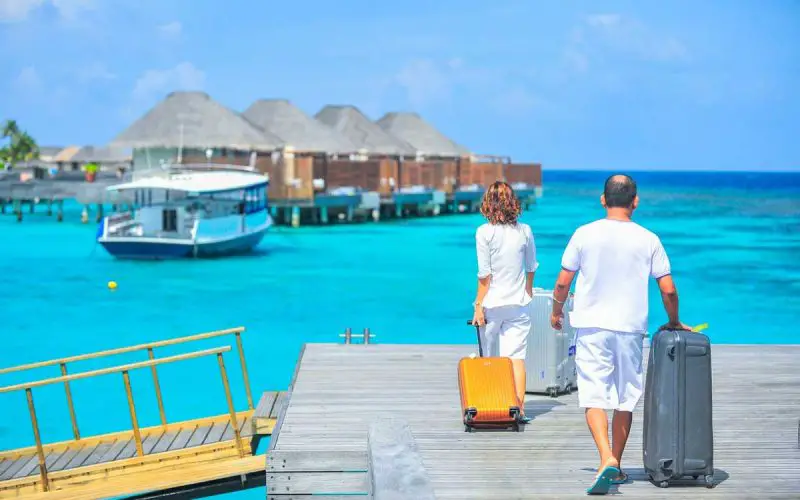
Table of Contents Show
1. wealth generation, 2. the progression of a country, 3. creation of jobs, 4. unity among different societies, 5. conservation, 6. improves geographical identity worldwide, 7. damage to the environment by tourists, 8. exploitation of local culture, 9. non-compliance of tourists, 10. lack of job security/seasonal only, 11. confined to service jobs, 12. unequal infrastructure growth, 13. foreign business owners, 14. neglecting of other sectors, 5+ fun facts on tourism, environmental damage, invasive organisms, negative impact on wildlife, loss of natural resources, challenging stereotypes, gaining cultural sensitivity, authentic experience of cultures.
Tourism is the department or an organization that facilitates people to allow them to visit or spend vacations at places they like.
Tourism is one of the most important industries in any country. It is a large contributor to the economy of a country as it can provide revenue throughout the year. Tourism helps in keeping the employment rate of countries stable as several job opportunities are created due to the tourism industry.
Sometimes, tourism can be a major source of foreign income for the country. This is like Maldives where 40% of the economy is generated from the Tourism industry.
This transaction doesn’t only facilitate the vacation or relaxation of tourists visiting these regions, but also helps to provide a better livelihood to everyone involved in the tourism sector.
Developed countries like USA and UK have greatly benefitted from medical tourism. Medical tourism involves people travelling to developed countries to get treatments unavailable in their home country. These are usually people from developing countries with sub-standard health care. You can also call them a medical tourist !
However, even with the great number of benefits of tourism, there are several drawbacks to it. These disadvantages are sometimes ignored by the tourism sector of that country as their sole purpose becomes profit. We must consider all aspects of tourism which include environmental responsibilities, profit and sustainability.
Today, we will look at some of the Pros and Cons of Tourism;
Advantages of Tourism
One of the major advantages of Tourism is a constant flow of cash. It is very important not just for the economy of the country as a whole but for all those working in the tourism sectors.
Commercial and private airlines operating from these countries tend to make a ton of revenue as people from around the world fly to a tourist attraction. Hotels and guest homes in the hospitality industry make a constant income as travelers flood hotel lobbies looking for a place to stay. This makes sure hotels make money throughout the year.
These small sectors, that come under the umbrella of tourism help to generate money for the country throughout the year. This cash flow is even more essential for small, developing, and third world nations as for some of them the tourist sector might be the biggest contributor to their local economy.
As wealth influx starts in the country, it helps the government to procure necessary funds for development and progression of the country. The tourism sector gives security and stability to the economy of the nation, preventing it from tanking in times of crisis.
The government also gets necessary funds to carry out large scale infrastructure projects like restaurants, hotels, casinos and theater which may further improve the tourism sector, providing more places for travelers to stay and more activities to indulge in. This will help to generate further cash influx.
Other than that, this wealth can also be used to improve the infrastructure of the country. This includes building roads, rail roads, better hospitals and education centers for natives as well as the tourists.
Tourism has provided various jobs to people who were previously unemployed. The natives gifted with constant stable jobs have greatly improved their livelihood ( there is a possible catch to this, I’ve explained in the cons ).
These jobs include working in areas such as hotels, restaurants, bars, casinos, theatres, zoos, parks, entertainment facilities, and more. Some of those you might remember from your last trip, especially the travel agent who booked your tickets or the tour operator who ensured that your trip went smooth or the captain of your cruise ship in the Caribbean. They work relentlessly, away from their families, to make sure you enjoy your vacations.
This has also led to the overall reduction of unemployment in the country, thus reducing burden on the government.
Did you know? 1 in 10 jobs are supported by Tourism industry across the world!
The unique feature of tourism is that it helps to create unity among people from different countries, cultures, backgrounds, traditions, and ethnicities who are all visiting to have some fun.
It allows people to learn different histories, traditions, cultures, diets, and lifestyles of the nations they are visiting. This helps to create understanding and oneness among people which can have a long-lasting impact socially.

Cross-cultural connections are developed as the natives interact with the tourists and may lead to further large-scale collaborations as well!
The main star of attraction for tourists visiting a country is its historical sites and landscapes, particularly the landmarks of the country. These landmarks may be in the form of churches, mosques, cathedrals, monuments, buildings, skyscrapers, beaches, amusement parks, and other attractions to say the least.
This means it becomes the government’s utmost priority to conserve these sites, for the tourism industry to be sustainable.
The government carries out regular maintenance of such areas and rules are placed concerned with damaging or vandalism of the property in order to protect these spots. Once these areas become a part of the tourism sector, they are no less than a cash generator for the country.
Tourists often go back home and praise about the vacation that they had. Every person that goes back home brags to at-least 10 more people about the wonderful vacation they had, usually through social media. This allows more people to know more about the country and helps it earn its name and make a place for itself on the map!
Increased recognition leads to further foreign investment and development, followed with increased tourism activity in the area.
Major Cons of Tourism
When it comes to tourism thousands of people may visit, even millions in some spots. This high influx of tourists can lead to immense environmental destruction, especially in destinations where tourists are more prone to visit.
This environmental burden is not solely due to the high influx of tourists, but it is associated with various other factors working together to bring environmental harm.
These factors include increased presence and use of cars, buses, trains, and other vehicles which may raise carbon emissions. A large number of flights at the airport could become a large contributor of air pollution as well.
Tourists can cause a lot of land pollution; as they throw a massive amount of garbage and waste, which is mostly non-biodegradable, leading to a massive number of landfills. All these activities may combine to greatly impact the environment of the region.
Soil erosion, Different kinds of Pollution , habitat loss and destruction as well as forest fires are just some of the environmental effects of tourism.
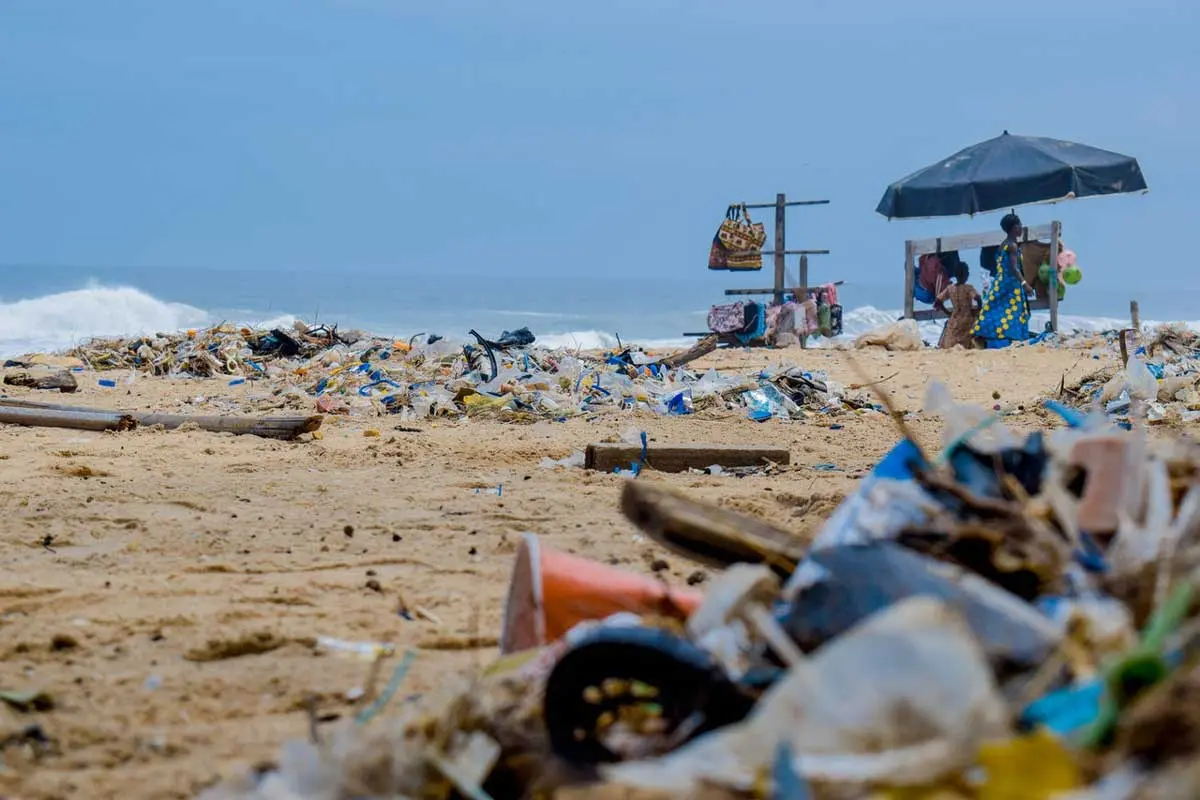
If these regions are not conserved and taken care of properly, they will lose their natural essence and subsequently be abandoned by tourists. This can lead to permanent damage of the natural tourist attractions!
Fortunately, we have been observing a rise in demand of sustainable tourism. We’ll be discussing that very soon.
Some countries, seeing the vast amount of tourists coming in their country to observe their unorthodox lifestyle and traditions, begin to commercialize their culture. It can be in the form of souvenirs. Usually, the natives are not offended by this.
However, in some regions this can be considered an outright disgrace and mocking of their culture. This is especially true for the regions where locals consider their culture to be their identity. Commercializing may result in people just wearing costumes and exhibiting traditions just to entertain tourists. Observing that the governments are using their culture as a tool for profiteering can cause them to feel sad and ridiculed by their nation.
Sometimes, tourists do not honor cultures and traditions of countries/regions they visit. They may break certain rules and unspoken codes of conduct to which the locals have very high regard. Tourists get drunk in public and do horrendous acts at times. This creates certain hatred among the locals for the incoming tourists.
Racist remarks by tourists and the socioeconomic gap between the tourists and the natives may further exacerbate the issue. The tourists may consider themselves in much higher regard than the natives. Such thoughts may provoke the tourists to act wildly and unlawfully, and sometimes even end up mocking the nation.
Look at it this way; if you go to a friend’s house, you don’t outright break stuff at his home or start shouting remarks to his/her family. You respectfully meet your friend and have a good time, in good spirits. That’s the way you should treat natives when you’re visiting another country, because you’re visiting their home !
Although we did mention that tourism leads to an increase in the employment rate; sometimes these jobs can be seasonal depending on the region and hence, cannot be a dependable income throughout the year. This is more concerning in countries that have specific durations and seasons of high influx of tourists from around the world. These seasonal jobs, hence, offer minimal job security and employees can be left without a proper pension or insurance.
Although tourism generates jobs for locals, most of these jobs are confined to service industry with minimal wages. These low-wage and minimum-skill workers have little ambition to promotion and getting higher up the chain.
Massive income generated from tourism offers countries to build upon infrastructure of the tourist destination only. Sadly, the countries do not use the revenue generated from this infrastructure to build and develop other regions which require maintenance and development.
The wealth generated from tourism is put back into tourism-related things and regions that desperately need improvement are constantly neglected. The locals who don’t live in tourist-economy regions are neglected which leads to imbalance of infrastructure development.
Sometimes most of the places which are heavily infiltrated by tourists are owned by foreign businesses. This means most of the profits and money coming into the country are being used by foreigners thereby causing significant loss of local businesses.
Local industries miss out on the primary source of income that is required for them to stay afloat and to grow. This can lead to businesses going bankrupt and losing, overall damaging the country’s economy.
Countries see that tourist is the major source of income for them, tend to ignore other various sectors upon which they are built. This leads to nations neglecting these sectors, thus causing a loss of income, jobs, and growth amongst these sectors. The country aims to put all of its resources in one basket which is the tourism industry, will leaving all others behind for them to crumble and diminish.
This over-reliance on a specific sector for the stability of the nations can sometimes cause a massive impact, especially during times of war, political instability, or natural disasters as it will be led to the long term closure of the tourism of those countries due to unrest. This can eventually drain the country down as its only resource which is tourism is no longer function, and it didn’t have any other sector nor did they built any other sector in a way for them to become sustainable in times of economic crisis.
- Tourism is responsible for 5% of the Global GDP!
- China stays as the world’s top tourism spender, spending more than 260 Billion Dollars!
- Global tourism industry being the largest industry contributes more than 7.5 trillion dollars in the world economy.
- Almost 10% of world’s jobs are sourced from Tourism Industry.
- Tourists spend the most cash in Dubai. Around 28.5 Billion dollars yearly!
- Osaka in Japan is emerging as the hottest tourist spot in the world.
Negative Environmental Impacts of Tourism
The government may choose to put the wealth generated from tourism into preservation of the environment. However, tourism still goes on to put sufficient burden on the natural resources of our planet and prompts over-consumption of natural resources in regions with already limited resources.
Once tourism becomes unsustainable, the surrounding environment starts to deteriorate. Tourism has a wide impact on the air quality, vegetation, water supply, wildlife, and the natural ecosystems of the region.
Most of the tourist activities have a negative impact on ecosystems. These include fishing, hiking, and snorkeling; all of which tend to affect and deplete the local scenery.
To run a tropical golf course for tourists requires water that can feed up to 60,000 locals. There is a trail in the Himalayas known as “the toilet paper trail” which shows how much damage tourism has caused to the environment.
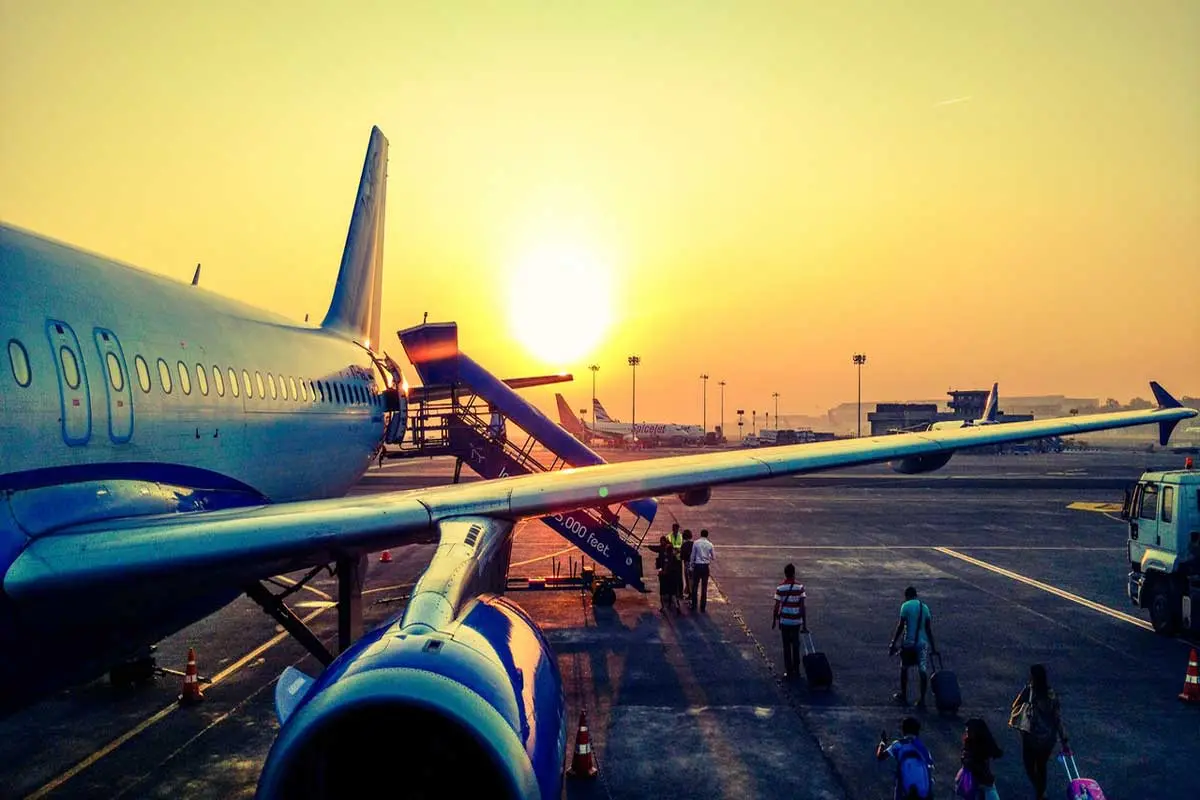
Once there is an influx of tourists to a common destination, there is an overuse of transportation systems which heavily contributes to pollution (Mainly air pollution). Tourism accounts for 60% of air travel worldwide, and flying one mile in a plane can produce 53 pounds of carbon dioxide.
Even travelers conscious of hurting the environment also cause a negative impact. Tourists that travel to natural sites located remotely, tend to cause damage to natural ecosystems they come to see.
The increased human presence on many geographical regions can alter the number of native plants in the region and introduce non native species in those areas.
Even species brought in as pets into the country are sometime released into the wild and could bring havoc upon the ecosystem if they turned out to be invasive species.

Human intervention and presence can disrupt food webs, ecological communities, and harm keystone species in an area. Others take an active approach and hunt foreign animals as a tourist activity. They can also damage the natural habitat of native wildlife by engaging with it. All of these contribute to wildlife endangerment and extinction.
Tourism can shrink the natural resources by causing over-consumption. This is particularly damaging in areas with food and water scarcity.
This may also lead to hatred among the locals for tourists who use up the limited water supply for luxuries. A natural resource like water could be used to fill up Jacuzzis at a 5-star hotel but could much better be used in feeding a child who suffers from dehydration.
Cultural Benefits of Traveling

When you get to visit another country and observe their culture, you get the opportunity to be exposed to unfamiliar perspectives and traditions and gain a more broad, much informed, and kinder view of the locals and places you encounter.
Perceptions and stereotypes might be replaced by first hand view of the people by the tourists themselves.
People get to see traditions and learn manners of different cultures. Manners and etiquette tourists may not have practiced in their native countries.
Pointing with your index fingers at the indigenous people, showing excessive skin, wearing shoes indoors, and making noises may be considered rude in some places.
So it is important to do a little bit of research on the local customs and traditions before visiting so you can try to avoid being offensive or inappropriate.
It can be a wonderful way to experience the insights of a different culture through the experience of traditions, rituals, festivals, celebrations, and rites. It gives the visitor a chance to understand the cultural heritage of a region much more deeply.
Tourism has its benefits to the economy but the environmental component of tourism shouldn’t be ignored. Think about that the next time you book your tickets. We are also working on reducing your environmental footprint when you travel…Can’t reveal more. Stay tuned!
For now I’d like to leave this picture for you to ponder about Eco-tourism.

Ahsen Soomro
My love for nature is not newfound. I have lived on the countryside for over a decade of my life where I realized how human activities impacted the environment. Later during my stint in medical school, I realized that many of our health concerns originate from neglecting our environmental responsibilities and this was just not sustainable in the long run. Raising awareness, not locally but globally, was the mission. This led to the foundation of EnvironmentBuddy!
Leave a Reply Cancel reply
Your email address will not be published. Required fields are marked *
Differences between Deforestation, Afforestation and Reforestation!
Afforestation; importance, advantages & disadvantages. current efforts, you may also like.

- 6 minute read
10 Health Benefits of Beetroot Juice; Added Recipes!
- One comment

- 7 minute read
10+ Different Species of Rainbow Fish
- No comments

- 10 minute read
What is Made of Plastic? 20+ Uses and Examples

- 5 minute read
The Negativity of Consumerism

What does Asbestos look like? How to Avoid Exposure?

Environmental impact of Fast Fashion and Solutions
- Net Zero Features
- Conscious Living Essentials
- Geothermal Energy Installers
- Planet Earth
- Climate Policy
- Sustainability

The Pros and Cons of Tourism
We are reader-supported. When you buy through links on our site, we may earn affiliate commission.
The tourism industry is one of the most lucrative and essential industries for the global economy since it can provide revenue almost year-round. It allows people to spend time in places they want to explore and enjoy. Every year, people from all over the world visit destinations like Paris, Hawaii, Mexico and Japan to experience a new culture through food, sightseeing and adventures.
Tourism provides thousands of jobs each year and allows people to explore the world at their leisure. It’s excellent for both the people touring an area themselves for happiness and well-being, and it’s great for the country’s population as a whole.
However, the disadvantages of tourism should be addressed, especially concerning the environment. Tourism industries in some countries often ignore these cons because they want to continue providing revenue for the peoples’ livelihoods. It’s easy to overlook the negative aspects when tourism has brought enormous wealth to developing countries.
If developing nations only rely on tourism and dismiss other aspects, like the environment, society and infrastructure development, the cons can quickly outweigh the pros. Fortunately, there are ways to be sustainable in the tourism industry. Here are the pros and cons of tourism.
The Pros of Tourism
From stimulating job growth to bridging cultural divides, tourism has many benefits for people, the economy and the environment. Below are five advantages of tourism.
1. Creates Jobs
One of the most significant benefits of tourism is creating jobs for people who may have previously been unemployed. Tourism accounts for about 10% of employment worldwide , whether directly or indirectly.
The tourism industry encompasses retailers, restaurant workers, transportation industries, entertainment facilities and hospitality workers. It can even include medical workers as some people travel for cosmetic surgery or medical advice and medications. This leads to the reduction of unemployment in many countries, which reduces the burden on the government.
2. Develops Countries
As more people get jobs in developing countries, they can further progress. The government can get the funds needed to advance their nation. The tourism industry offers more security and financial stability. Plus, the government can carry out various infrastructure projects to continue its progression by building roads, hospitals, hotels, restaurants, and entertainment businesses to allow more people to stay, generating more jobs and wealth.
3. Conserves the Environment
Some of the primary attractions in countries are the historical sights and beautiful landscapes. Often, countries try to conserve these sights and attractions to continue bringing in more tourists. Governments and private entities often use tourism money to maintain historical sight and protect the environment.
4. Broadens Knowledge and Appreciation of Nature
An airboat ride through the Florida Everglades delivers more than the perfect photo opportunity. Airboat captains share stories about the river’s history, wildlife facts, environmental issues plaguing the ecosystem, and how the average person can make a difference. Travel experiences like this are crucial for broadening one’s knowledge and deepening their appreciation for the natural world. The hope is for tourists to impart their knowledge to someone else and spark an interest in conservation and sustainable habits.
5. Encourages Culture-Learning
Finally, tourism encourages the learning of different cultures. It helps to create a sense of unity among people from various cultures and countries. Tourism encourages people of all backgrounds to visit a particular place, so tourist destinations become a melting pot of other cultures. People can begin to understand one another and may even make friends with people from other countries.
The Cons of Tourism
While welcoming visitors to explore a particular area has benefits — especially within the eco-tourism subsector — it’s not all rainbows and sunshine. Unfortunately, there are some cons of tourism that often get overlooked, such as the following.
1. Damages the Environment
Although countries do their best to conserve the environment, including animals, plants and natural scenes, tourists can still be disrespectful. As people flock to one place, waste and pollution accumulate. Sometimes, tours offer animal experiences as well, which put animals through suffering. Further, land is needed to accommodate tourists, so countries will destroy habitats to build hotels and restaurants.
2. Puts Pressure on Natural Resources
Another con of the tourism industry is that it puts an immense amount of pressure on natural resources. Anytime someone stays in an area, they inevitably use the area’s natural resources , like water and food. Cities and countries around the world have faced droughts. Additionally, tourism puts stress on the local land use, leading to soil erosion which can cause damage to infrastructure.
3. Strains Infrastructure
Too many tourists in one location can significantly strain infrastructure, including roadways, water resources and waste disposal. For instance, nearly 30 million tourists visit Venice, Italy, annually, crowding narrow canals and limited roadways. In the Caribbean, Antigua and Barbuda is among the most frequently vacationed and water-stressed countries, with under 1000 cubic meter of freshwater resources per capita. Without a municipal wastewater treatment center, most households rely on poorly built septic tanks.
4. Encourages Dependence on Tourism
It’s not a good thing to be solely dependent on tourism. Regions known for their tourist destinations learned that lesson once COVID-19 spread throughout the world. When people could no longer travel, the tourism industry in countries that depended on it had a more difficult time recovering and getting the necessary resources that locals needed to survive. Without tourists, those countries would receive no more income, which affects the entire country.
5. Leads to Loss of Cultural Identity
Often, locals in a tourist destination will begin copying the lifestyles of tourists and leave their local and cultural traditions behind. Instead of shops filled with daily necessities for the locals, they are filled with things tourists need, like travel-sized toiletries and souvenirs. Fast-food chains have taken over local cuisine as well. And unfortunately, tourism has led to a growth in prostitution and human trafficking.
Making Tourism a More Sustainable Industry
Tourism is a necessary part of the economy, but the adverse effects often go unnoticed. Fortunately, there are ways to make it a more sustainable industry. Tourists should support the local economy, avoid single-use plastics, take more eco-friendly modes of transportation and avoid all of the traditional “tourist” excursions. The next time you travel, make sustainability a priority.
This post was last updated on April 9, 2024 to provide more current information.
Thanks for subscribing! Please check your email for further instructions.
Like what you read? Join other Environment.co readers!
Get the latest updates on our planet by subscribing to the Environment.co newsletter!
About the author

Like or Dislike? Social Media and Sustainability’s Influential Relationship

7 Companies Making Waves with Sustainable Investing

Accessible Ideas for Self-Sufficient Living
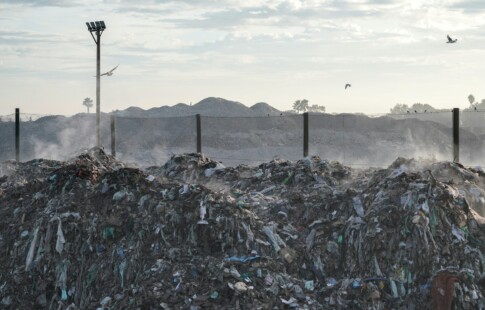
The Impacts of Methane Burning and How to Abate Them

How Much Greenhouse Gasses Are Produced Every Year?

What Groups Set Hunting Regulations in Most States?
National Geographic content straight to your inbox—sign up for our popular newsletters here

What's the problem with overtourism?
With visitor numbers around the world increasing towards pre-pandemic levels, the issue of overtourism is once again rearing its head.
When locals in the charming Austrian lakeside village of Hallstatt staged a blockade of the main access tunnel, brandishing placards asking visitors to ‘think of the children’, it highlighted what can happen when places start to feel overrun by tourists. Hallstatt has just 800 residents but has opened its doors to around 10,000 visitors a day — a population increase of over 1,000%. And it’s just one of a growing number of places where residents are up in arms at the influx of travellers.
The term ‘overtourism’ is relatively new, having been coined over a decade ago to highlight the spiralling numbers of visitors taking a toll on cities, landmarks and landscapes. As tourist numbers worldwide return towards pre-pandemic levels, the debate around what constitutes ‘too many’ visitors continues. While many destinations, reliant on the income that tourism brings, are still keen for arrivals, a handful of major cities and sites are now imposing bans, fines, taxes and time-slot systems, and, in some cases, even launching campaigns of discouragement in a bid to curb tourist numbers.
What is overtourism?
In essence, overtourism is too many people in one place at any given time. While there isn’t a definitive figure stipulating the number of visitors allowed, an accumulation of economic, social and environmental factors determine if and how numbers are creeping up.
There are the wide-reaching effects, such as climate change. Coral reefs, like the Great Barrier Reef and Maya Bay, Thailand, made famous by the Leonardo DiCaprio film, The Beach , are being degraded from visitors snorkelling, diving and touching the corals, as well as tour boats anchoring in the waters. And 2030 transport-related carbon emissions from tourism are expected to grow 25% from 2016 levels, representing an increase from 5% to 5.3% of all man-made emissions, according to the United Nations World Tourism Organisation (UNWTO). More localised issues are affecting locals, too. Renters are being evicted by landlords in favour of turning properties into holiday lets, and house prices are escalating as a result. As visitors and rental properties outnumber local residents, communities are being lost. And, skyrocketing prices, excessive queues, crowded beaches, exorbitant noise levels, damage at historical sites and the ramifications to nature as people overwhelm or stray from official paths are also reasons the positives of tourism can have a negative impact.
Conversely, ‘undertourism’ is a term applied to less-frequented destinations, particularly in the aftermath of the pandemic. The economic, social and environmental benefits of tourism aren't always passed on to those with plenty of capacity and, while tourist boards are always keen for visitors to visit their lesser-known attractions, it’s a more sustainable and rewarding experience for both residents and visitors.

What’s the main problem with it?
Overcrowding is an issue for both locals and tourists. It can ruin the experience of sightseeing for those trapped in long queues, unable to visit museums, galleries and sites without advance booking, incurring escalating costs for basics like food, drink and hotels, and faced with the inability to experience the wonder of a place in relative solitude. The absence of any real regulations has seen places take it upon themselves to try and establish some form of crowd control, meaning no cohesion and no real solution.
Justin Francis, co-founder and CEO of Responsible Travel, a tour operator that focuses on more sustainable travel, says “Social media has concentrated tourism in hotspots and exacerbated the problem, and tourist numbers globally are increasing while destinations have a finite capacity. Until local people are properly consulted about what they want and don’t want from tourism, we’ll see more protests.”
A French start up, Murmuration, which monitors the environmental impact of tourism by using satellite data, states that 80% of travellers visit just 10% of the world's tourism destinations, meaning bigger crowds in fewer spots. And, the UNWTO predicts that by 2030, the number of worldwide tourists, which peaked at 1.5 billion in 2019, will reach 1.8 billion, likely leading to greater pressure on already popular spots and more objection from locals.
Who has been protesting?
Of the 800 residents in the UNESCO-listed village of Hallstatt, around 100 turned out in August to show their displeasure and to push for a cap on daily visitors and a curfew on tour coach arrivals.
Elsewhere, residents in Venice fought long and hard for a ban on cruise ships, with protest flags often draped from windows. In 2021, large cruise ships over 25,000 tonnes were banned from using the main Giudecca Canal, leaving only smaller passenger ferries and freight vessels able to dock.
In France, the Marseille Provence Cruise Club introduced a flow management system for cruise line passengers in 2020, easing congestion around the popular Notre-Dame-de-la-Garde Basilica. A Cruise Lines International Association (CLIA) spokesperson said, “Coaches are limited to four per ship during the morning or afternoon at the Basilica to ensure a good visitor experience and safety for residents and local businesses. This is a voluntary arrangement respected by cruise lines.”
While in Orkney, Scotland, residents have been up in arms at the number of cruise ships docking on its shores. At the beginning of 2023, the local council confirmed that 214 cruise ship calls were scheduled for the year, bringing around £15 million in revenue to the islands. Following backlash from locals, the council has since proposed a plan to restrict the number of ships on any day.

What steps are being taken?
City taxes have become increasingly popular, with Barcelona increasing its nightly levy in April 2023 — which was originally introduced in 2012 and varies depending on the type of accommodation — and Venice expects to charge day-trippers a €5 fee from 2024.
In Amsterdam this summer, the city council voted to ban cruise ships, while the mayor, Femke Halsema, commissioned a campaign of discouragement, asking young British men who planned to have a 'vacation from morals’ to stay away. In Rome, sitting at popular sites, such as the Trevi Fountain and the Spanish Steps, has been restricted by the authorities.
And in Kenya’s Maasai Mara, meanwhile, the Narok County governor has introduced on-the-spot fines for off-roading. He also plans to double nightly park fees in peak season.
What are the forecasts for global tourism?
During the Covid pandemic, tourism was one of the hardest-hit industries — according to UNWTO, international tourist arrivals dropped 72% in 2020. However, traveller numbers have since been rapidly increasing, with double the number of people venturing abroad in the first three months of 2023 than in the same period in 2022. And, according to the World Travel Tourism Council, the tourism sector is expected to reach £7.5 trillion this year, 95% of its pre-pandemic levels.
While the tourism industry is forecast to represent 11.6% of the global economy by 2033, it’s also predicted that an increasing number of people will show more interest in travelling more sustainably. In a 2022 survey by Booking.com, 64% of the people asked said they would be prepared to stay away from busy tourist sites to avoid adding to congestion.
Are there any solutions?
There are ways to better manage tourism by promoting more off-season travel, limiting numbers where possible and having greater regulation within the industry. Encouraging more sustainable travel and finding solutions to reduce friction between residents and tourists could also have positive impacts. Promoting alternative, less-visited spots to redirect travellers may also offer some benefits.
Harold Goodwin, emeritus professor at Manchester Metropolitan University, says, “Overtourism is a function of visitor volumes, but also of conflicting behaviours, crowding in inappropriate places and privacy. Social anthropologists talk about frontstage and backstage spaces. Tourists are rarely welcome in backstage spaces. To manage crowds, it’s first necessary to analyse and determine the causes of them.
Francis adds: “However, we must be careful not to just recreate the same problems elsewhere. The most important thing is to form a clear strategy, in consultation with local people about what a place wants or needs from tourism.”
As it stands, overtourism is a seasonal issue for a small number of destinations. While there is no one-size-fits-all solution, a range of measures are clearly an option depending on the scale of the problem. For the majority of the world, tourism remains a force for good with many benefits beyond simple economic growth.
Related Topics
- OVERTOURISM
- SUSTAINABLE TOURISM
You May Also Like

How can tourists help Maui recover? Here’s what locals say.

What is tourist tax and will you have to pay it in Europe this summer?
Become a subscriber and support our award-winning editorial features, videos, photography, and much more..
For as little as $2/mo.

One of Italy’s most visited places is an under-appreciated wine capital

In this fragile landscape, Ladakh’s ecolodges help sustain a way of life

Cinque Terre’s iconic ‘path of love’ is back. Don’t love it to death

25 breathtaking places and experiences for 2023

See the relentless beauty of Bhutan—a kingdom that takes happiness seriously
- Best of the World
- Environment
- Paid Content
History & Culture
- History & Culture
- Out of Eden Walk
- Mind, Body, Wonder
- Here Not There
- Terms of Use
- Privacy Policy
- Your US State Privacy Rights
- Children's Online Privacy Policy
- Interest-Based Ads
- About Nielsen Measurement
- Do Not Sell or Share My Personal Information
- Nat Geo Home
- Attend a Live Event
- Book a Trip
- Inspire Your Kids
- Shop Nat Geo
- Visit the D.C. Museum
- Learn About Our Impact
- Support Our Mission
- Advertise With Us
- Customer Service
- Renew Subscription
- Manage Your Subscription
- Work at Nat Geo
- Sign Up for Our Newsletters
- Contribute to Protect the Planet
Copyright © 1996-2015 National Geographic Society Copyright © 2015-2024 National Geographic Partners, LLC. All rights reserved
- What Are The Negative Effects Of Tourism On The Environment?

Tourism is usually regarded as a boon to a region’s economy. Tourism brings prosperity to the region and provides employment to the locals of the region. However, when tourism becomes unsustainable in nature, it can have disastrous consequences on the environment. When the tourist industry active in the region crosses the legal and ethical barriers to earn more profit, it can lead to massive degradation of the environment in the area. Local human population, flora, and fauna, suffer greatly due to such irresponsible and unsustainable tourism. Some of the ways in which tourism adversely impacts the environment have been mentioned below:
Tourism And Pollution
Transport of tourists results in air pollution.
The movement of tourists from their home to the tourist destination involves transport via road, rail, or air, or a combination of these modes of transport. When a large number of tourists are involved, it invariably leads to a greater use of the transportation system. We all are aware of the fact that emissions from automobiles and airplanes are one of the biggest causes of air pollution. When a large number tourists use these modes of transport to reach a particular attraction, it pollutes the air both locally and globally. Due to the rapid growth in international tourism, tourists now account for nearly 60% of air travel. In many places, buses or other vehicles leave their motors running to ensure that tourists return to comfortable air-conditioned vehicles. Such practices further pollute the air.
Tourism Leads To Noise Pollution
Tourists destinations are often subject to significant noise pollution. Tourists vehicles entering and leaving natural areas create a lot of noise. Such noise is the source of distress for wildlife. Loud music played by tourists in forested areas also disturb the animals living in the area. Often, noise generated by tourist activities for long-term alters the natural activity patterns of animals.
Littering Of Tourist Spots By Irresponsible Tourists
Irresponsible tourists often litter the tourist spots visited by them. Waste disposal is a great problem in the natural environment. According to estimates, cruise ships in the Caribbean produce over 70,000 tons of waste annually. If waste is disposed of irresponsibly in the sea, it can lead to the death of marine animals. Even the Mount Everest is not free of human-generated waste. Trekkers leave behind their oxygen cylinders, garbage, and camping equipment on the mountains and hills. Some trails in the Himalayas and the Andes have been nicknamed the "Toilet paper trail” or the "Coca-Cola trail,” referring to the garbage left behind on such trails.
Sewage Generated At Tourist Spots Contaminate The Natural Environment
Rampant construction of tourist facilities like hotels, cafes, restaurants, etc., in an area without proper arrangement for safe disposal of sewage, can lead to disastrous consequences. Wastewater carrying sewage from such areas often pollutes nearby water bodies. It can lead to the eutrophication of water bodies and the loss of the balance in aquatic ecosystems. Pollution of water bodies with sewage can also lead to health issues and even epidemics that can ultimately wipe out large populations of aquatic flora and fauna and also impact human health adversely.
Tourism Can Spoil The Aesthetics Of The Environment
Tourist facilities built to earn a profit without any concern about integrating the design with the natural features of the place can lead to aesthetic pollution. Large resorts of disparate designs can dominate the landscape and spoil the natural beauty of a place.
Tourism And Natural Resources
When tourism is encouraged in an area with inadequate resources, it will have a negative impact on the ecosystem of the area. In such areas, the local flora and fauna might be deprived of the resources needed to sustain their lives. For example, large volumes of water are consumed to cater to the needs of the tourists, run hotels, swimming pools, maintain golf courses, etc. This can degrade the quality of water and decrease the volume of water that is available for the local population, plants, and animals. It is not only the water resources that are depleted. Unsustainable practices by the tourist industry can also put pressure on other resources like food, energy, etc.
Tourism And Physical Degradation Of The Ecosystem
Every ecosystem works on a delicate natural balance. Every species in the ecosystem has a specific role to play in the system. However, tourism often disturbs this delicate balance and creates a great disaster in the ecosystem. When the tourist industry active in an area is completely profit-minded, it pays little heed to the needs of nature. For example, often hotels and resorts are built illegally very close to the beach or inside the core areas of forests. Large patches of natural vegetation need to be cleared to allow space for the sprawling resorts or hotels. As old tourist spots get degraded due to overuse by tourists, newer ‘upcoming’ destinations with fewer crowds become the next favorite of tourists and the tourism industry. The same situation is repeated once more. Unsustainable practices by the tourism industry can thus lead to deforestation, sand erosion, loss of species, changes in sea currents and coastlines, destruction of habitats, etc. Even activities like nature walks can be harmful to the environment if tourists trample on the local vegetation during their walk. Such trampling can lead to reduced plant vigor, breakage of stems, reduced regeneration, etc. Tourists breaking off corals during snorkeling or scuba diving activities can also contribute to ecosystem degradation. Commercial harvesting of corals for sale to tourists also causes harm to coral reefs. Even the anchorage of cruise ships to coral reefs can degrade large sections of the reef.
- Environment
More in Environment

Importance Of Wetlands

Meet 12 Incredible Conservation Heroes Saving Our Wildlife From Extinction

India's Leopard God, Waghoba, Aids Wildlife Conservation In The Country

India's Bishnoi Community Has Fearlessly Protected Nature For Over 500 Years

Wildfires And Habitat Loss Are Killing Jaguars In The Amazon Rainforest

In India's Sundarbans: Where People Live Face-To-Face With Wild Tigers

Africa's "Thunderbird" Is At Risk Of Extinction

Why Is Biodiversity Critical To Life On Earth?

Backpacking Guys
What Are 6 Disadvantages of Tourism?
While tourism can bring economic benefits, it also has a darker side , with six significant drawbacks. Environmental degradation and pollution occur due to unchecked growth, harming natural habitats and contributing to climate change. Disrespect for local cultures leads to the erosion of customs and traditions. Overcrowding and urbanization put pressure on local resources and displace communities. The increased cost of living makes it challenging for locals to afford basics. The loss of authenticity and heritage occurs as unique cultural practices are adapted for mass consumption. As you delve into the complex world of tourism, you'll uncover more surprising consequences of this global phenomenon.
Environmental Degradation and Pollution
The unchecked growth of tourism has led to a devastating impact on the environment , resulting in the degradation of natural habitats and the pollution of air, water, and land. The influx of visitors to popular tourist destinations has led to the destruction of natural habitats, such as coral reefs, forests, and wildlife reserves. The construction of hotels, resorts, and other tourist infrastructure has resulted in the destruction of habitats and the displacement of native species.
Furthermore, the tourism industry is a significant contributor to air and water pollution. The increasing number of flights, buses, and cars transporting tourists has led to a significant increase in greenhouse gas emissions , contributing to climate change . Additionally, the disposal of waste and sewage from tourist facilities has contaminated water sources, posing a serious threat to aquatic ecosystems.
To make matters worse, the tourism industry's reliance on single-use plastics has exacerbated the problem of plastic pollution . The careless disposal of plastic waste has led to the contamination of oceans, rivers, and landscapes, harming marine life and ecosystems. Urgent action is necessary for the tourism industry to mitigate its environmental impact, adopting sustainable practices and reducing its carbon footprint to preserve the natural beauty of tourist destinations for future generations.
Disrespect for Local Cultures
Cultural homogenization, fueled by the influx of tourists, has led to the erosion of local customs , traditions, and values, leaving indigenous communities vulnerable to the loss of their unique identities. As tourists flock to exotic destinations, they often bring with them their own cultural norms, which can clash with those of the host community. This can lead to the suppression of local customs and the adoption of more commercialized and tourist-friendly practices.
Moreover, the increased demand for tourist-oriented amenities and services can result in the gentrification of traditional neighborhoods , pushing out long-time residents and small businesses. Local artisans and craftsmen may find themselves struggling to compete with cheap, mass-produced souvenirs, leading to the loss of traditional skills and knowledge.
Furthermore, the constant stream of tourists can lead to the commodification of cultural practices , reducing them to mere spectacles for the entertainment of visitors. This can result in the exploitation of local communities , as they are pressured to perform their cultural traditions for the benefit of tourists, rather than preserving them as an integral part of their heritage. It is crucial for tourists and the tourism industry to be aware of these risks and take steps to promote cultural sensitivity and respect for local customs.
Overcrowding and Urbanization
As I wander through the narrow streets of once-quaint destinations, I'm struck by the sheer volume of humanity that now floods these areas, transforming them into overcrowded hubs that strain local infrastructure and resources. The charm and character of these places are slowly being erased, replaced by the chaos and noise of mass tourism.
The consequences of overcrowding and urbanization are far-reaching and devastating. Some of the most significant impacts include:
- Strain on Local Resources : Overcrowding puts immense pressure on local resources, including water, energy, and waste management systems, leading to shortages and inefficiencies.
- Loss of Authenticity : The unique character and charm of a destination are often lost as areas become commercialized and gentrified to cater to tourists.
- Increased Air and Noise Pollution : The influx of tourists brings with it a surge in air and noise pollution, degrading the environment and quality of life for locals.
- Displacement of Local Communities : As areas become more popular, locals are often priced out of their own neighborhoods, leading to the displacement of entire communities.
The effects of overcrowding and urbanization are undeniable, and it's essential to acknowledge and address these issues to promote sustainable tourism practices that benefit both tourists and locals alike, and ultimately facilitate a harmonious coexistence.
Increased Cost of Living
Rising tourism numbers have a profound impact on the cost of living for local residents , who are often priced out of their own markets as businesses cater to wealthy tourists. As demand for accommodations, food, and services increases, prices skyrocket, making it challenging for locals to afford the basics. This phenomenon is particularly pronounced in popular tourist destinations , where the influx of visitors drives up housing costs , forcing long-time residents to seek alternative, often more expensive, options.
The increased cost of living also affects the local workforce , as businesses prioritize catering to tourists over serving the local community. This shift in focus leads to higher prices for staples like food and transportation, further straining the budgets of local residents. In addition, the tourism-driven economy often creates a culture of disposability , where cheap, imported goods are preferred over locally sourced products, further exacerbating the problem.
The consequences of this trend are far-reaching, with local communities struggling to maintain their quality of life in the face of an increasingly tourist-driven economy. As the cost of living continues to rise, residents are forced to adapt to a new reality, where their own neighborhoods become unaffordable and inaccessible. Crucially, policymakers and stakeholders must acknowledge the impact of tourism on the cost of living and work towards creating a more sustainable, equitable balance between the needs of tourists and those of the local community.
Loss of Authenticity and Heritage
In the wake of mass tourism, the unique character of a destination is often sacrificed on the altar of commercialism, leaving behind a bland, homogenized landscape that bears little resemblance to the authentic heritage of the local community. This loss of authenticity and heritage is a lamentable consequence of unchecked tourism growth.
As tourist infrastructure and amenities proliferate, the distinct cultural identity of a place begins to erode.
- Gentrification of traditional neighborhoods : Local residents are priced out of their own communities as tourist-friendly amenities and accommodations spring up.
- Homogenization of local culture : Unique cultural practices and traditions are watered down or lost as they are adapted for mass consumption.
- Commercialization of sacred sites : Historic and culturally significant sites are transformed into tourist attractions, losing their spiritual or historical significance.
- Displacement of local businesses : Small, family-owned enterprises are pushed out by large corporations catering to tourists, leading to a loss of local character.
The consequences of this erosion of authenticity are far-reaching, affecting not only the local community but also the very essence of the destination itself. As tourists, we must be mindful of our impact on the places we visit and aim to preserve the cultural heritage of the destinations we love.
Exploitation of Local Resources
Mass tourism's insatiable appetite for local resources often overwhelms the fragile ecosystems and infrastructure of popular destinations, leading to the unchecked depletion of natural assets . The unrelenting demand for accommodations, food, and activities puts immense pressure on local resources, resulting in the over-extraction of water, energy, and other essential commodities. This not only harms the environment but also leads to increased costs for locals, further exacerbating social and economic disparities .
The exploitation of local resources also has significant environmental consequences . The construction of hotels, resorts, and other tourist infrastructure often results in the destruction of natural habitats, loss of biodiversity, and pollution. Moreover, the increased demand for transportation and energy-intensive activities contributes to greenhouse gas emissions , accelerating climate change . Furthermore, the disposal of waste, including plastics, chemicals, and human waste, poses a significant threat to ecosystems and public health.
To mitigate these negative impacts, it is essential to adopt sustainable tourism practices that prioritize resource conservation , reduce waste, and promote eco-friendly activities . This can be achieved through collaborative efforts between governments, local communities, and the tourism industry to implement environmentally conscious policies and practices. By adopting a more responsible approach to tourism, we can ensure that local resources are protected, and the benefits of tourism are shared equitably among all stakeholders.
Hey there, fellow adventurers! I'm Michail, the guy behind BackpackingGuys.com, and I'm just an ordinary explorer with an unwavering passion for the great outdoors.
My journey into the world of backpacking started with a simple eagerness to uncover the wonders of our planet. At BackpackingGuys.com, I weave my everyday experiences into the narrative. I
t's not about showcasing triumphs; it's about sharing relatable stories that connect with fellow wanderers who, like me, are navigating the exciting realm of outdoor adventures.
Similar Posts
Can you wear trail running shoes every day?, what does a travel journal look like?, can i bring 2 backpacks to airport?, can an unmarried couple stay in a hotel in morocco?, how long can you stay in a bothy?, is spain still charging tourist taxes?.
Describe the Advantages and Disadvantages of Tourism in the Modern World- IELTS Writing Task 2
Updated On Aug 14, 2024
Share on Whatsapp
Share on Email
Share on Linkedin

Table of Contents
Sample essay.
Limited-Time Offer : Access a FREE 10-Day IELTS Study Plan!
Describe the advantages and disadvantages of tourism in the modern world.
Advantages and Disadvantages Essay
Introduction
Paraphrase the topic sentence using synonyms.
Body Paragraphs
The tourism industry is a valuable asset to the economy of a country. Tourism makes up for a considerable part of the national income of a country.
There are also disadvantages to the tourism industry, it creates channels for illegal activities and tourists are often known to be unaware of the norms of a foreign land.
Summarize the topic and mention the final view.
Tourism has progressed much faster over the last few decades and is one of the most commercially active industries in the world. The global tourism industry is accountable for a sizeable chunk of the wealth of many countries. A majority of developing nations are highly dependent on tourism for not only their national income but also the functioning of various other industries. However, like any other institution , there are pros and cons to the development of tourism as well. So, in this essay, I will elaborate on both aspects of tourism.
The growth of tourism brings along a multitude of benefits that significantly improve the economic outlook of a country. Since tourism is one of the chief sources of foreign exchange, it enhances the monetary stability of the country. Furthermore, when tourists visit a foreign nation, they tend to use different kinds of services that facilitate the business of industries like hospitality, transportation and leisure, to name a few. Advantages of tourism also include political stability among nations, as liberal travel laws and regulations help in maintaining cordial relations between different countries. Additionally, when international tourists visit another country, they get an unmediated experience of the culture of the place, most of which captivates them. It leads to the promotion and exchange of the native heritage on a global basis.
Au contraire, there are several drawbacks that come along with the increase in tourism. It is a well-known fact that foreign nationals are typically ignorant about the social norms and conventions of the places they visit. There are numerous cases of tourists vandalising cultural attractions and harming the sanctity of many spiritual locations. Further, tourism also sparks controversy, as it opens up channels for unlawful migration and trade of prohibited materials.
In conclusion, advancement in tourism does have its strengths and weaknesses. Nevertheless, the advantages tend to surpass the disadvantages in most cases.
- Accountable
Meaning: required or expected to justify actions or decisions; responsible. Eg: The seniors were accountable for the organization of the event.
Meaning: a piece of something. Eg: A big chunk of the design is done by him alone.
Meaning: requiring someone or something for financial or other support. Eg: Any economy is heavily dependent on imports and exports.
- Institution
Meaning: an established law or practice. Eg: The institution of marriage is a legal contract in the eyes of the law.
Meaning: a large number of people or things. Eg: There were a multitude of problems that came along with this situation.
Meaning: a view; perspective Eg: He had a positive outlook on life.
Meaning: relating to money or currency. Eg: The monetary condition of their business was concerning.
Meaning: (in a political context) favouring policies that are socially progressive and promote social welfare. Eg: Modern laws are quite liberal towards previously stigmatized groups.
Meaning: lacking knowledge, information, or awareness about a particular thing. Eg: Society is quite ignorant about the consequences of global warming.
- Vandalising
Meaning: deliberately destroy or damage (public or private property). Eg: The culprits were caught vandalising the building walls.
- IELTS Essay Topics
- IELTS Sample essays
- IELTS Writing task 2 Tips
- Tips to Improve IELTS Writing Skills
- IELTS Writing recent actual test
- IELTS Writing Answer sheet
Practice IELTS Writing Task 2 based on Essay types

Start Preparing for IELTS: Get Your 10-Day Study Plan Today!

Janice Thompson
Soon after graduating with a Master’s in Literature from Southern Arkansas University, she joined an institute as an English language trainer. She has had innumerous student interactions and has produced a couple of research papers on English language teaching. She soon found that non-native speakers struggled to meet the English language requirements set by foreign universities. It was when she decided to jump ship into IELTS training. From then on, she has been mentoring IELTS aspirants. She joined IELTSMaterial about a year ago, and her contributions have been exceptional. Her essay ideas and vocabulary have taken many students to a band 9.
Explore other Advantage Disadvantage Essays

Post your Comments
Recent articles.

Raajdeep Saha

Kasturika Samanta

Akanksha Tripathi

IELTSMaterial Master Program
1:1 Live Training with Band 9 Teachers
4.9 ( 3452 Reviews )
Our Offices
Gurgaon city scape, gurgaon bptp.
Step 1 of 3
Great going .
Get a free session from trainer
Have you taken test before?
Please select any option
Email test -->
Please enter Email ID
Mobile Band 9 trainer -->
Please enter phone number
Application
Please select any one
Already Registered?
Select a date
Please select a date
Select a time (IST Time Zone)
Please select a time
Mark Your Calendar: Free Session with Expert on
Which exam are you preparing?
Great Going!

- Embedded System
- Interview Q
- Send your Feedback to [email protected]
Help Others, Please Share

Learn Latest Tutorials
Transact-SQL
Reinforcement Learning
R Programming
React Native
Python Design Patterns
Python Pillow
Python Turtle
Preparation

Verbal Ability

Interview Questions

Company Questions
Trending Technologies
Artificial Intelligence
Cloud Computing
Data Science
Machine Learning
B.Tech / MCA
Data Structures
Operating System
Computer Network
Compiler Design
Computer Organization
Discrete Mathematics
Ethical Hacking
Computer Graphics
Software Engineering
Web Technology
Cyber Security
C Programming
Control System
Data Mining
Data Warehouse

Top Streams
- Data Science Courses in USA
- Business Analytics Courses in USA
- Engineering Courses in USA
- Tax Courses in USA
- Healthcare Courses in USA
- Language Courses in USA
- Insurance Courses in USA
- Digital Marketing Courses in USA
Top Specialization
- Masters in Data Analytics in USA
- Masters in Mechanical Engineering in USA
- Masters in Supply Chain Management in USA
- Masters in Computer Science in USA
- MBA in Finance in USA
- Masters in Architecture in USA
Top Universities
- Cornell University
- Yale University
- Princeton University
- University of California Los Angeles
- University of Harvard
- Stanford University
- Arizona State University
- Northeastern University
- Scholarships to Study in USA
- Project Management Courses in Australia
- Accounting Courses in Australia
- Medical Courses in Australia
- Psychology Courses in Australia
- Interior Designing Courses in Australia
- Pharmacy Courses in Australia
- Social Work Courses in Australia
- MBA in Australia
- Masters in Education in Australia
- Masters in Pharmacy in Australia
- Masters in Information Technology in Australia
BBA in Australia
- Masters in Teaching in Australia
- Masters in Psychology in Australia
- University of Melbourne
- Deakin University
- Carnegie Mellon University
- Monash University
- University of Sydney
- University of Queensland
- RMIT University
- Macquarie University
- PR Courses in Australia
- SOP for Australia Student Visa
- Data Science Courses in Canada
- Business Management Courses in Canada
- Supply Chain Management Courses in Canada
- Project Management Courses in Canada
- Business Analytics Courses in Canada
- Hotel Management Courses in Canada
- MBA in Canada
- MS in Canada
- Masters in Computer Science in Canada
- Masters in Management in Canada
- Masters in Psychology in Canada
- Masters in Education in Canada
- MBA in Finance in Canada
- Masters in Business Analytics in Canada
- University of Toronto
- University of British Columbia
- McGill University
- University of Alberta
- York University
- University of Calgary
- Algoma University
- University Canada West
- IELTS requirement for Canada Student Visa
- Canada Visa Interview
- Top cities in Canada for International Students
- Project Management Courses in UK
- Data Science Courses in UK
- Public Health Courses in UK
- Digital Marketing Courses in UK
- Hotel Management Courses in UK
- Nursing Courses in UK
- Medicine Courses in UK
- Interior Designing Courses in UK
- Masters in Computer Science in UK
- Masters in Psychology in UK
- MBA in Finance in UK
- MBA in Healthcare Management in UK
- Masters in Education in UK
- Masters in Marketing in UK
- MBA in HR in UK
- University of Oxford
- University of Cambridge
- Coventry University
- University of East London
- University of Hertfordshire
- University of Birmingham
- Imperial College London
- University of Glasgow
Top Resources
- Universities in Germany
- Study in Germany
- Masters in Germany
- Courses in Germany
- Bachelors in Germany
- Germany Job Seeker Visa
- Cost of Living in Germany
- Best Universities in Germany
Top Courses
- Masters in Data Science in Germany
- MS in Computer Science in Germany
- Marine Engineering in Germany
- MS Courses in Germany
- Masters in Psychology in Germany
- Hotel Management Courses in Germany
- Masters in Economics in Germany
- Paramedical Courses in Germany
- Karlsruhe Institute of Technology
- University of Bonn
- University of Freiburg
- University of Hamburg
- University of Stuttgart
- Saarland University
- Mannheim University
- MBA in Ireland
- Phd in Ireland
- Masters in Computer Science Ireland
- Cyber Security in Ireland
- Masters in Data Analytics Ireland
- Ms in Data Science in Ireland
- Pharmacy courses in ireland
- Business Analytics Course in Ireland
- Universities in Ireland
- Study in Ireland
- Masters in Ireland
- Courses in Ireland
- Bachelors in Ireland
- Cost of Living in Ireland
- Ireland Student Visa
- Part Time Jobs in Ireland
- Trinity College Dublin
- University College Dublin
- Dublin City University
- University of Limerick
- Dublin Business School
- Maynooth University
- University College Cork
- National College of Ireland
Colleges & Courses
- Masters in France
- Phd in France
- Study Medicine in France
- Best Universities in Frankfurt
- Best Architecture Colleges in France
- ESIGELEC France
- Study in France for Indian Students
- Intakes in France
- SOP for France Visa
- Study in France from India
- Reasons to Study in France
- How to Settle in France
More About France
- Cost of Living in France
- France Study Visa
- Cost of Living in Frankfurt
- France Scholarship for Indian Students
- Part Time Jobs in France
- Stay Back in France After Masters
About Finland
- Universities in Finland
- Study in Finland
- Courses in Finland
- Bachelor Courses in Finland
- Masters Courses in Finland
- Cost of Living in Finland
- MS in Finland
- Average Fees in Finland Universities
- PhD in Finland
- Jobs in Finland
- Bachelor Degree in Medicine & Surgery
- MBBS Courses in Georgia
- MBBS Courses in Russia
- Alte University
- Caucasus University
- Georgian National University SEU
- David Tvildiani Medical University
- Caspian International School Of Medicine
- Asfendiyarov Kazakh National Medical University
- Kyrgyz State Medical Academy
- Cremeia Federal University
- Bashkir State Medical University
- Kursk State Medical University
- Andijan State Medical Institute
- IELTS Syllabus
- IELTS Prepration
- IELTS Eligibility
- IELTS Test Format
- IELTS Band Descriptors
- IELTS Speaking test
- IELTS Writing Task 1
- IELTS score validity
- IELTS Cue Card
IELTS Reading Answers Sample
- Animal Camouflage
- Types Of Societies
- Australia Convict Colonies
- A Spark A Flint
- Emigration To The Us
- The History Of Salt
- Zoo Conservation Programmes
- The Robots Are Coming
- The Development Of Plastic
IELTS Speaking Cue Card Sample
- Describe A Puzzle You Have Played
- Describe A Long Walk You Ever Had
- Describe Your Favourite Movie
- Describe A Difficult Thing You did
- Describe A Businessman You Admire
- Memorable Day in My Life
- Describe Your Dream House
- Describe A Bag You Want to Own
- Describe a Famous Athlete You Know
- Aquatic Animal
IELTS Essay Sample Sample
- Best Education System
- IELTS Opinion Essay
- Agree or Disagree Essay
- Problem Solution Essays
- Essay on Space Exploration
- Essay On Historical Places
- Essay Writing Samples
- Tourism Essay
- Global Warming Essay
- GRE Exam Fees
- GRE Exam Syllabus
- GRE Exam Eligibility
- Sections in GRE Exam
- GRE Exam Benefits
- GRE Exam Results
- GRE Cutoff for US Universities
- GRE Preparation
- Send GRE scores to Universities
GRE Exam Study Material
- GRE Verbal Preparation
- GRE Study Material
- GRE AWA Essays
- GRE Sample Issue Essays
- Stanford University GRE Cutoff
- Harvard University GRE Cutoff
- GRE Quantitative Reasoning
- GRE Verbal Reasoning
- GRE Reading Comprehension
- Prepare for GRE in 2 months
Other Resources
- Documents Required For Gre Exam
- GRE Exam Duration
- GRE at Home
- GRE vs GMAT
- Improve GRE Verbal Scores
Free GRE Ebooks
- GRE Preparation Guide (Free PDF)
- GRE Syllabus (Free PDF)
- GMAT Eligibility
- GMAT Syllabus
- GMAT Exam Dates
- GMAT Registration
- GMAT Exam Fees
- GMAT Sections
- GMAT Purpose
GMAT Exam Study Material
- How to prepare for GMAT?
- GMAT Score Validity
- GMAT Preparation Books
- GMAT Preparation
- GMAT Exam Duration
- GMAT Score for Harvard
- GMAT Reading Comprehension
- GMAT Retake Strategy

Free GMAT Ebooks
- GMAT Guide PDF
- Download GMAT Syllabus PDF
- TOEFL Exam Registration
- TOEFL Exam Eligibility
- TOEFL Exam Pattern
- TOEFL Exam Preparation
- TOEFL Exam Tips
- TOEFL Exam Dates
- Documents for TOEFL Exam
- TOEFL Exam Fee
TOEFL Exam Study Material
- TOEFL Preparation Books
- TOEFL Speaking Section
- TOEFL Score and Results
- TOEFL Writing Section
- TOEFL Reading Section
- TOEFL Listening Section
- TOEFL Vocabulary
- Types of Essays in TOEFL
Free TOEFL Ebooks
- TOEFL Exam Guide (Free PDF)
- PTE Exam Dates
- PTE Exam Syllabus
- PTE Exam Eligibility Criteria
- PTE Test Centers in India
- PTE Exam Pattern
- PTE Exam Fees
- PTE Exam Duration
- PTE Exam Registration
PTE Exam Study Material
- PTE Exam Preparation
- PTE Speaking Test
- PTE Reading Test
- PTE Listening Test
- PTE Writing Test
- PTE Essay Writing
- PTE exam for Australia
Free PTE Ebooks
- PTE Syllabus (Free PDF)
- Duolingo Exam
- Duolingo Test Eligibility
- Duolingo Exam Pattern
- Duolingo Exam Fees
- Duolingo Test Validity
- Duolingo Syllabus
- Duolingo Preparation
Duolingo Exam Study Material
- Duolingo Exam Dates
- Duolingo Test Score
- Duolingo Test Results
- Duolingo Test Booking
Free Duolingo Ebooks
- Duolingo Guide (Free PDF)
- Duolingo Test Pattern (Free PDF)
NEET & MCAT Exam
- NEET Study Material
- NEET Preparation
- MCAT Eligibility
- MCAT Preparation
SAT & ACT Exam
- ACT Eligibility
- ACT Exam Dates
- SAT Syllabus
- SAT Exam Pattern
- SAT Exam Eligibility
USMLE & OET Exam
- USMLE Syllabus
- USMLE Preparation
- USMLE Step 1
- OET Syllabus
- OET Eligibility
- OET Prepration
PLAB & LSAT Exam
- PLAB Exam Syllabus
- PLAB Exam Fees
- LSAT Eligibility
- LSAT Registration
- PLAB Accepted Countries
- TOEIC Result
- Study Guide
Application Process
- LOR for Masters
- SOP Samples for MS
- LOR for Phd
- SOP for Internship
- SOP for Phd
- Check Visa Status
- Motivation Letter Format
- Motivation Letter for Internship
- F1 Visa Documents Checklist
Career Prospects
- Popular Courses after Bcom in Abroad
- Part Time Jobs in Australia
- Part Time Jobs in USA
- Salary after MS in Germany
- Salary after MBA in Canada
- Average Salary in Singapore
- Higher Studies after MBA in Abroad
- Study in Canada after 12th
- Most Demanding Engineering Fields
Trending Topics
- Best Education System in World
- Best Flying Schools in World
- Top Free Education Countries
- Best Countries to Migrate from India
- 1 Year PG Diploma Courses in Canada
- Germany Post Study Work Visa
- Post Study Visa in USA
- Packing List for Indian Students
- Data Science Vs Data Analytics
- Public Vs Private Universities in Germany
- Universities Vs Colleges
- Difference Between GPA and CGPA
- Undergraduate Vs Graduate
- MBA in UK Vs MBA in USA
- Degree Vs Diploma in Canada
- IELTS vs TOEFL
- Duolingo English Test vs. IELTS
- Canada Vs India
Why Study in Canada
- Cost of Living in Canada
- Education System in Canada
- SOP for Canada
- Summer Intake in Canada
- Spring Intake in Canada
- Winter Intake in Canada
- Accommodation in Canada for Students
- Average Salary in Canada
- Fully Funded Scholarships in Canada
- Why Study in USA
- Cost of Studying in USA
- Spring Intake in USA
- Winter Intake in USA
- Summer Intake in USA
- STEM Courses in USA
- Scholarships for MS in USA
- Acceptable Study Gap in USA
- Interesting Facts about USA
- Free USA course
- Why Study in UK
- Cost of Living in UK
- Cost of Studying in UK
- Education System in UK
- Summer Intake in UK
- Spring Intake in UK
- Student Visa for UK
- Accommodation in UK for Students
- Scholarships in UK
- Why Study in Germany
- Cost of Studying in Germany
- Education System in Germany
- SOP for Germany
- Summer Intake in Germany
- Winter Intake in Germany
- Study Visa for Germany
- Accommodation in Germany for Students
- Free Education in Germany
Country Guides
- Study in UK
- Study in Canada
- Study in USA
- Study in Australia
- SOP Samples for Canada Student Visa
- US F1 Visa Guide for Aspirants
Exams Guides
- Duolingo Test Pattern
Recommended Reads
- Fully Funded Masters Guide
- SOP Samples For Australia
- Scholarships for Canada
- Data Science Guide
- SOP for MS in Computer Science
- Study Abroad Exams
- Alumni Connect
- Booster Program
- Scholarship
GPA CALCULATOR Convert percentage marks to GPA effortlessly with our calculator!
Expense calculator plan your study abroad expenses with our comprehensive calculator, ielts band calculator estimate your ielts band score with our accurate calculator, education loan calculator discover your eligible loan amount limit with our education calculator, university partner explore growth and opportunities with our university partnership, accommodation discover your perfect study abroad accommodation here, experience-center discover our offline centers for a personalized experience, our offices visit us for expert study abroad counseling..
- 18002102030
- Study Abroad
Advantages and Disadvantages of Tourism IELTS Essay: Sample
- IELTS Preparation
- IELTS E-Books
- IELTS Registration
- IELTS Exam Fee
- IELTS Exam Dates 2024
- Documents Required
- IELTS Test Centers
- Test Format
- Band Descriptors
- IELTS Speaking Test
- General Reading Test
- General Writing Task
- IELTS Coaching
- Types of Essays
- IELTS for Australia
- IELTS Results
- Generation Gap Essay
- GPA Calculator
- Study Abroad Consultant In India
- Study Visa Consultants in India
Updated on 29 July, 2024

Sunita Kadian
Ielts expert.
You can readily check out the samples for the advantages and disadvantages of a tourism IELTS essay here. There are 40 minutes that you will get for completing the essay, with the minimum word count being 250. The upper limit is not present in most scenarios. Make sure that you check the samples carefully for the writing style.
Table of Contents
Advantages and disadvantages of tourism ielts essay samples - 2, download ielts sample papers, frequently asked questions, important study abroad articles, study abroad without ielts, advantages and disadvantages of tourism ielts essay samples.
Question- Describe the advantages and disadvantages of tourism in the modern world .
Essay 1-
In a time when globalization is sweeping the entire ecosystem, tourism has a crucial responsibility for developing global economies and nations. Nowadays, tourism is what makes widespread economic contributions to all countries, although there are a few negatives as well. This essay talks about the advantages and disadvantages of tourism before concluding with a final opinion.
The biggest benefits of tourism are quite obvious, i.e., boosting the national GDP and economy and creating more employment for local citizens and communities. Tourists use diverse solutions while traveling, including booking hotels, flights, transportation, and guides. They also require food, shopping, and leisure while indulging in a wide gamut of other activities. This leads to extra income for thousands, which contributes handsomely to the country's economy. Tourism increases the GDP significantly and helps create more employment opportunities. People are always needed as tour guides, operators, booking agents, hotel and restaurant staff, transportation personnel, etc. Tourism thus has huge benefits to bring to the table for any country and its local population.
Yet, there are some negatives of tourism as well. This includes the rampant damage of several well-known destinations and increased crime or illegal activities. The huge number of tourists thronging popular cultural and historical landmarks and monuments and other centers of pilgrimage lead to major structural and environmental damage. Along with this aspect, national resources are often overused and overexploited for handling this rush of tourists. At the same time, tourists bring their jewelry, money, and other expensive items, becoming targets for anti-social criminals and thieves, leading to a growth in illegal activities and crime. Hence, tourism has some disadvantages as well. However, the Government can take proactive steps to eliminate the same by providing more security and policing while maintaining popular monuments, tourist spots, and natural resources alike.
To conclude, it can be said that while tourism does have specific disadvantages, it has a positive impact on livelihood, national economies, and overall employment. It also fosters cultural exchange, information gathering, and educational growth. Hence, while Governments may fix the negatives with proactive measures, the positives far outweigh them, in my opinion. (370 words)
Important Resources to Read About IELTS Exam:
Master IELTS for FREE
Unlock your potential with our expertly crafted IELTS FREE Course designed to help you achieve your desired band score. Don't miss this unique opportunity to start your journey towards global success.
In this Course you will find:
- Expert instructions from experienced instructor.
- Comprehensive coverage of all IELTS modules.
- Flexible, self-paced online learning.
- Interactive lessons and practice tests.
- Exclusive tips and strategies.
Download E-Books for IELTS Preparation

Tourism has witnessed rapid development over several decades, becoming a major industry worldwide. The global tourism sector is responsible for generating a major percentage of economic wealth for several countries. Most developing economies are also hugely dependent upon tourism for earning national income and the smooth operation of several business sectors and industries, along with maintaining their levels of employment generation. Yet, like every other sector and institution, tourism will always have some advantages and disadvantages. Hence, in this article, we will discuss the pros and cons of tourism in detail to have a balanced insight.
The growth and development of global tourism naturally bring myriad benefits to entire cities, countries, and communities alike. Tourism is one of the biggest foreign exchange sources and boosts the monetary positions of countries by adding to their economy and GPD alike. Whenever tourists visit any other country, they usually use various services and products that enable industries such as hotels and hospitality, airlines, transportation, leisure, food and beverages, souvenirs, apparel, and more. Other benefits of tourism include better relationships and political equations amongst nations, easier travel regulations, and inter-cultural and socio-economic exchange, which fosters better understanding, knowledge, and education overall. Heritage is also promoted and understood by every country at a global level.
However, there are several disadvantages of tourism as well. Growth in tourism means a higher chance of illegal activities and crime, especially theft, since tourists bring valuables in their wake. Secondly, foreign tourists often damage and vandalize places of national interest and importance. They often litter areas while damaging natural resources and beautiful spots simultaneously. They are often ignorant about social and legal conventions in foreign countries and end up violating the same in some situations. Tourism also opens up avenues for illegal migration and trading illegal items at times. However, despite all these disadvantages, I firmly believe that the advantages surpass them in every sense of the term. (339 words)
In conclusion, tourism undeniably plays a critical role in the global economy and cultural exchange, offering substantial benefits such as economic growth, cultural preservation, and international understanding. However, it also poses challenges including environmental impact, cultural commodification, and economic dependence. Balancing these advantages and disadvantages requires sustainable and responsible tourism practices that respect local cultures, protect natural environments, and promote equitable economic benefits. As the world continues to become increasingly interconnected, understanding and addressing the complexities of tourism is essential for preserving its positive impacts while mitigating its negative effects. This nuanced approach to tourism, embracing both its benefits and challenges, is key to ensuring that it remains a positive force in our global society. Read More About IELTS:

What are the benefits and disadvantages of tourism in the modern world?
Tourism has many advantages in the contemporary world. It promotes global connections and cultural exchange while leading to more information dissemination and helps people experience and understand new things. It helps in new business opportunities, generates direct and indirect employment, adds to the GDP of the country and earnings of the region and its local people, promotes entrepreneurship and also works to promote the country globally.
The disadvantages include pollution, littering, waste and a strain on the natural resources and infrastructure of the country. Tourism often leads to severe income dependency and may cause fluctuations in the future as a result. It often leads to crime going up in a country owing to the influx of different people. It may cause chaos and congestion as well. Sometimes, over-tourism makes it difficult to preserve and maintain natural and cultural heritage as well.
What are the advantages and disadvantages of tourism IELTS essay?
You will have to answer the question given in the essay which goes as follows- Describe the advantages and disadvantages of tourism in the modern world . You will have to first provide an introduction talking about the question and your own opinion regarding the same. Then talk about the benefits of tourism in a paragraph, following it up with another paragraph on the negative aspects of tourism. You can then sign off with a conclusion.
What advantages can tourism bring to cities ielts?
You have to write about the distinct tourism advantages for cities. These include the fact that tourism infuses an economic boost for any city along with a steady flow of income and revenues for the Government. It adds to the city’s local economy, creates more jobs and entrepreneurship and also enables inter-cultural exchange and idea/information exchange. It helps a city showcase itself to the world, which brings more business and cultural collaborations in the future.
Why tourism is important for a country IELTS?
Tourism and travel have a huge contribution on the fortunes of any country. This is through not only higher employment and more revenues for the country (that it can spend on infrastructure development) but also through more entrepreneurship, global recognition of a country’s treasures, attractions and achievements and most importantly, the facilitation of cultural and social exchange amongst people of different nations. Travel and tourism plays a vital role in establishing a country’s role in the community of nations.
What are the structures for advantages and disadvantages of tourism essay?
You have to first talk about the given question in your introductory paragraph. You can then state your own opinion in brief about the advantages and disadvantages of tourism. You can then start off with a paragraph detailing the benefits offered by tourism and then talk about the disadvantages of tourism in your essay as well. Thereafter, once these two paragraphs are done, you can write a conclusion, spelling out the topic, your opinion and what you think should be the way forward. This is the basic structure that you can follow in this regard.
Pursue MBA in USA
Learn all about MBA programs in the USA
Scholarships for Students
Learn about types of scholarships, how to get a scholarship, their sources & a lot more.
PNP Program Canada
Learn all about eligibility, documents, application process, cost & more.
Canada Part Time Jobs
Learn how you can earn living costs by doing part-time jobs in Canada.
Statement of Purpose Format
Learn all about how to write a SOP along with perfect SOP samples
Know the best reasons to study in Canada and detailed requirements
Letter of Recommendation Format
Learn all about a LOR and how to write a LOR with these LOR samples
Vidya Lakshmi Portal
Study abroad by applying for a student loan at the Vidya Lakshmi Portal
Masters Courses in USA
Master's in the USA is a dream for aspirants who wish to build a fulfilling career
How to Check Visa Status
Learn how to check your visa status online using the passport number or application ID.
MS in Germany
Know the various courses at top German universities offering MS in Germany.
Experience Certificate
Learn about job experience certificates with work experience certificate format
Study in Germany for Free
Learn about studying in Germany for free for Indian students
CGPA to GPA Conversion
Difference between GPA and CGPA, and also learn how to convert GPA into CGPA.
Best Countries to Study Abroad for Indian Students
Best countries to study abroad with quality education & highly paid job opportunities
Learn about different aspects of pursuing MBA in Australia including the costs involved.
MBBS in Canada
Learn all about pursuing MBBS in Canada including job prospects after graduating.
NOC for Canada
Get complete details of NOC code in Canada to get started with Job hunt in Canada
USA Study Visa Requirements
Learn about USA study visa requirements
What is Motivation Letter
Learn how to write a motivation letter and simplify your admission process.

MS in Data Science in Germany
Save up to 20 Lakhs with upGrad Abroad

BBA in Canada
Study BBA in Canada & save INR 25 Lakhs
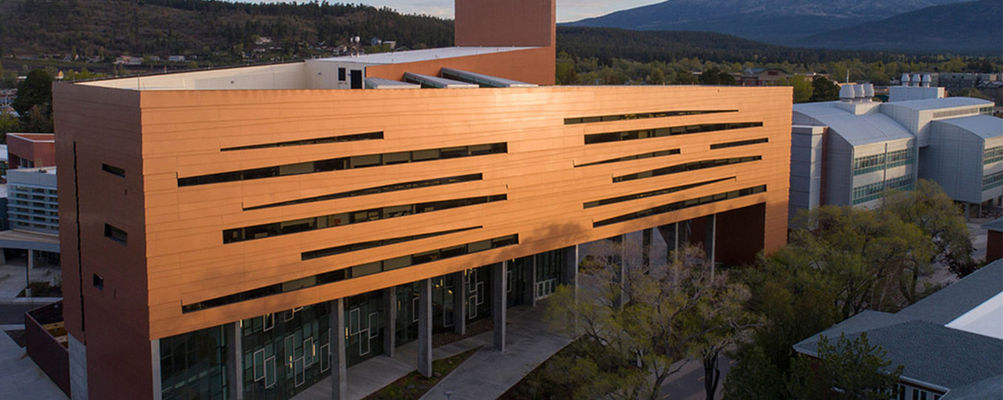
BCA in the USA
Study BCA in Australia & Save ₹ 20 Lakhs

Masters in Business Studies in Ireland
Save up to 20 Lakhs on MBS in Ireland

Study BBA in Australia & Save up to INR 20 Lakhs
Sunita Kadian, co-founder and Academic Head at Yuno Learning is an expert in IELTS and English communication. With a background in competitive exam preparation (IELTS, GMAT, CAT, TOEFL), interview prep, and corporate soft skills training, she has adapted these programs for the Yuno platform. Her dedication and commitment earned high praise from students, especially for her public speaking and advanced speaking English courses. Sunita's mastery of language nuances and articulation makes her a favorite among IELTS students. She holds a Postgraduate degree in English Literature, a B.Ed., and a Post Graduate Diploma in Public Relations.
Important Exams
Important resources for ielts, free study abroad counselling, refer your friend & earn upto ₹15000.
Help your friend upgrade to a Global Career and earn rewards together.
TRENDING SEARCHES
Editor's pick, other countries.
- MA in Communication
- Bachelors in Aviation
- BSc in Nursing
- Masters in Accounting
- Courses in Australia
- Nursing Courses in Australia
- Masters in Australia
- La Trobe University
- MS in Australia
- Universities in Australia
- University of Melbourne Courses
- Masters in Business Analytics in Australia
- Masters in Public Health in Australia
- University of Adelaide
- University of Manitoba
- University of Victoria
- Masters in Canada
- University of Windsor
- Courses in Canada
- Universities in Canada
- University of Saskatchewan
- Thompson Rivers University
- Trent University
- Masters in Data Science in Canada
- Concordia University
- University of Oxford Courses
- Courses in UK
- Kings College London
- Northumbria University Ranking
- Liverpool John Moores University Ranking
- Masters in UK
- Universities in UK
- Bachelors in UK
- University of West London Ranking
- University of Strathclyde Ranking
- De Montfort University
- University of Leicester
- University of Bristol
- Manchester Metropolitan University Ranking
- University of Sussex Ranking
- Birmingham City University
- University of Leicester Ranking
- University of Cambridge Courses
- Queen Mary University of London
- Queen Mary University of London Ranking
- George Mason University ranking
- Saint Louis University
- masters in computer science in usa
- University of South Florida ranking
- Purdue University ranking
- Columbia University Ranking
- Universities in USA
- Bachelors in USA
- Northeastern University acceptance rate
- New York University
- George Mason University
- Drexel University Ranking
- Courses in USA
- University of Texas at Arlington ranking
- University at Buffalo
- Saint Louis University Ranking
- University of Dayton ranking
- Pace University
- Purdue University
- Masters in USA
- DePaul University
- DePaul University Ranking
- Northeastern University ranking
- New York University Ranking
- University of Texas at Dallas ranking
- Columbia University Acceptance Rate
- Duolingo Certificate
- IELTS Band Score Chart
- MBA In UK Without Gmat
- SAT Exam Syllabus
- IELTS Writing Task 2 Topics
- Gre Exam Fee in India
- Universities in Canada Without IELTS
- Top Phrases for IELTS Speaking Test
- IELTS Introduction Sample
- Duolingo vs IELTS
- GRE Waived University In Usa
- Duolingo Accepted Universities In Australia
- Duolingo Accepted Universities In Canada
- 22 July IELTS Exam
- Duolingo Exam Fee
- CEFR Level in IELTS
- Minimum IELTS Score For Canada
- IELTS Speaking Scores
- Gmat Syllabus
- How to download IELTS Scorecard
- Usmle Test Centers In India
- IELTS Common Speaking Topics
- Universities in Netherlands
- Dundalk Institute of Technology Courses
- Dublin City University Courses
- Technological University Dublin Courses
- Dundalk Institute of Technology
- Business Courses in Ireland
- Maynooth University Courses
- Masters Courses in Netherlands
- University of Limerick Courses
- Technological University Dublin
- Courses in Netherlands
- National University of Ireland Galway Courses
- University of Europe for Applied Sciences Acceptance Rate
- Study in Netherlands
The above tips are the Author's experiences. upGrad does not guarantee scores or admissions.
Call us to clear your doubts at:
- Grievance Redressal
- Terms of Use
- Privacy Policy
- Report a Vulnerability
- University Partner
- Accommodation
- IELTS Band Calculator
- Download Study Abroad App
- Education Loan Calculator
- upGrad Abroad Office
- Expense Calculator
- Knowledge Base
- Business Partner
Top Destinations
Masters programs.
- MBA in Germany, IU
- MIM in Germany, IU
- MS in CS in Germany, IU
- MS in Data Analytics in USA, Clark University
- MS in Project Management in USA, Clark University
- MS in IT in USA, Clark University
- MS in Data Analytics & Visualization in USA, Yeshiva University
- MS in Artificial Intelligence in USA, Yeshiva University
- MS in Cybersecurity, Yeshiva University
Study Abroad Important Blogs
- Cost of Study:
- Cost of Studying in Canada
- Cost of Studying in Ireland
- Cost of Studying in Australia
- Cost of living:
- Cost of living in UK
- Cost of living in Australia
- Cost of living in Germany
- Cost of living in Ireland
- Cost of living in Canada
- Cost of Living in Singapore
- Cost of Living in Netherlands
- Career Opportunities:
- Career Opportunities in Australia
- Career Opportunities in Germany
- Job Opportunities in After MS in Canada
- Job Opportunities After MBA in Australia
- Job Opportunities After MS in UK
- IELTS Exam Resources:
- Academic IELTS
- IELTS Band Score
- IELTS Writing Task 2
- IELTS Slot Booking
- IELTS Score for UK
- IELTS Score for USA
- Validity of IELTS Score
- IELTS Speaking Topics
- IELTS Reading Tips
- How to Prepare for IELTS at Home Without Coaching
- IELTS Preparation Books
- Types of IELTS Exam
- IELTS Academic vs General
- IELTS Exam Pattern
- IELTS Essay
- IELTS Exam Dates
- Top Streams:
- Fashion Designing Courses in Australia
- Accounting Courses in Canada
- Management Courses in Canada

Advantages And Disadvantages Of International Tourism
- Miscellaneous
- Aug 13, 2023
- Noshin Bashir

Several countries heavily rely on tourism as a significant part of their economies. These countries often have stunning natural landscapes, rich cultural heritage, unique infrastructure, historical sites, or unique attractions that draw in a large number of tourists. Some examples of countries that heavily rely on tourism include MALDIVES, Spain, Switzerland, Thailand, Switzerland, etc.
With its breathtaking beaches and luxurious resorts, tourism is the backbone of the Maldives’ economy, contributing a substantial portion of its GDP. Apart from the Maldives, Spain, and Thailand are major tourist destinations known for their beaches, historic cities, and cultural sites. Ancient history, stunning islands, and archaeological sites of Greece attract tourists from around the world.
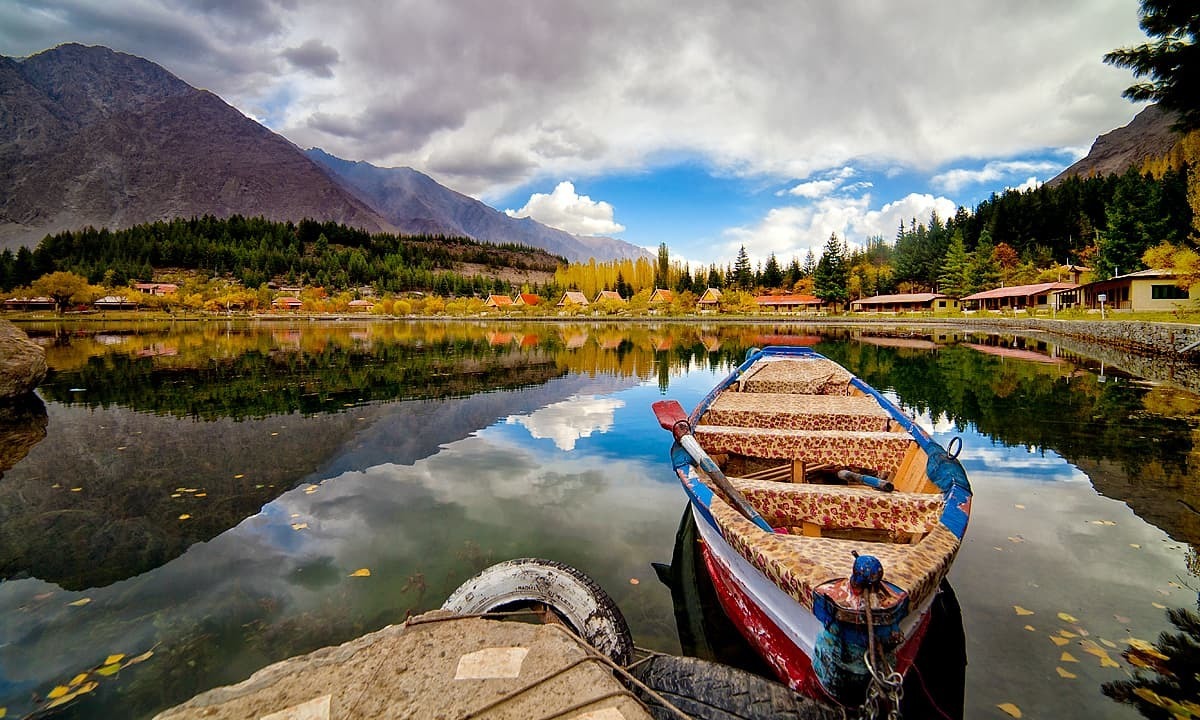
Tourism brings about a range of benefits to both the host country or destination and the tourists themselves. Here are some of the key advantages of tourism. For instance, tourism is a significant contributor to economic growth, generating revenue and creating employment opportunities in various sectors, such as hospitality, transportation, entertainment, and retail.
Tourism also brings in foreign exchange through expenditures by tourists on accommodations, food, transportation, attractions, and souvenirs. This revenue can bolster a country’s balance of payments and support local economies.
Additionally, the need to cater to tourists often leads to improved infrastructure such as transportation networks, airports, roads, and public facilities, which can benefit both tourists and local residents. Tourism provides opportunities for a wide range of job types, from hotel staff and tour guides to artisans and performers, contributing to job diversification within local communities.
Above all, tourism promotes cultural exchange and encourages the preservation and maintenance of historical sites, landmarks, and cultural heritage, as they become valuable assets for attracting visitors.
While these advantages are notable, it’s important to implement sustainable tourism practices that minimize the negative impacts and ensure that the benefits of tourism are distributed equitably among local communities, economies, and the environment.
It’s important to note that while tourism can bring economic benefits to these countries, it also poses challenges, such as managing environmental impact, preserving local culture, and ensuring equitable distribution of tourism-related income.
While tourism offers numerous benefits, it also comes with its share of disadvantages. Here are some common drawbacks associated with tourism. First, tourism can lead to environmental degradation through increased pollution, deforestation, habitat destruction, and overuse of natural resources. Popular tourist destinations often experience increased waste generation and strain on local ecosystems.
Second, excessive tourism can lead to the commodification and commercialization of local cultures, resulting in the loss of authentic traditions and values. Communities may start catering primarily to tourists, diluting their own cultural practices.

Besides, the sheer volume of tourists in some places can overwhelm infrastructure, damage historical sites, and disrupt the lives of local residents. This phenomenon, known as over-tourism, can lead to negative impacts on both the environment and the community. Moreover, as demand for goods and services rises due to tourism, the cost of living in a destination can increase, making it challenging for local residents to afford basic necessities.
Tourists sometimes may unintentionally disrespect local customs, traditions, and etiquette due to a lack of awareness, causing tensions between visitors and locals. Above all, natural disasters can really turn the tourism industry upside down as has been in the case of the recent pandemic. T he COVID-19 pandemic has highlighted the vulnerability of economies heavily dependent on tourism, as travel restrictions and health concerns have led to a significant decrease in tourist arrivals.
Many countries imposed strict travel restrictions and lockdown measures to contain the spread of the virus. This resulted in the closure of borders, suspension of international flights, and restrictions on movement, bringing international travel to a halt. This led to a massive decrease in tourist arrivals, causing a severe decline in revenue for tourism-dependent economies. Airlines too faced a sharp decline in demand for flights, leading to financial struggles, layoffs, and even bankruptcies for many airlines around the world.
Share This Post:
Related posts.

11 Signs To Know If He Is Cheating On You?
Matric paper of english bise sargodha, read surah muzammil online.

Experience Is The Best Teacher
Recent posts.

What Is D8 Organization? What Does It Aim For?

What Should You Do In Case Of Road Injury?
List of airports in iran, leave a comment cancel reply.
Your email address will not be published. Required fields are marked *
Save my name, email, and website in this browser for the next time I comment.
- Partners and Fundings
- events & news
- green hotels
- who’s talking about us
Overtourism: Causes, Consequences and Solutions
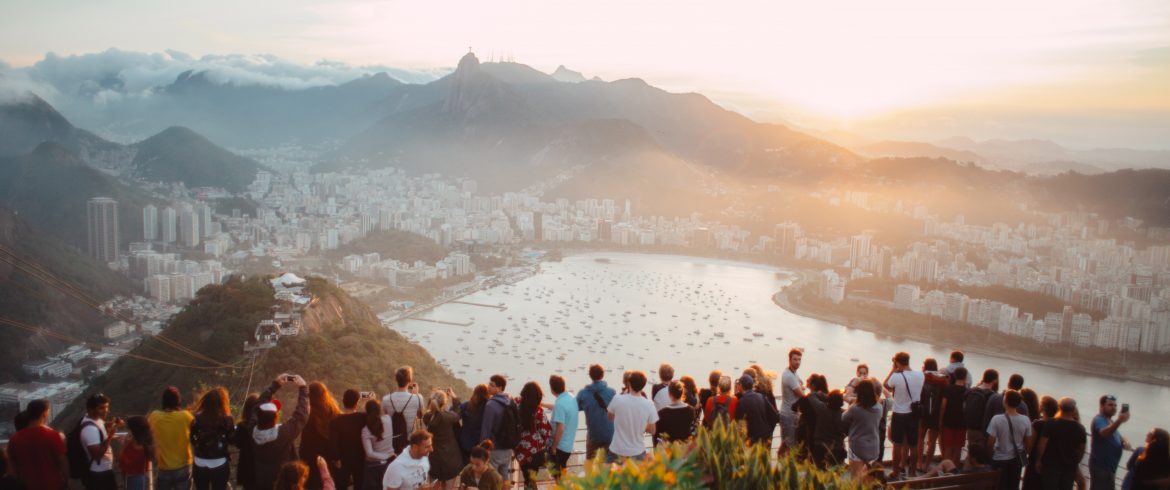
Overtourism : one of the words that people use most in recent years. In effect, more and more often, tourist destinations suffer from overtourism, tourism overcrowding . Places that everyone wants to see because they are “famous”. Movie scenes shot in locations (such as Lake Braies ) that now attract hordes of tourists looking for a short trip. Simply, they stop the time for a selfie and then leave for the next famous stage. This type of mass tourism causes pollution, the devastation of nature and distress of local populations. Let’s see in detail what is overtourism, what are its causes , what are the consequences , and what can be done to avoid it.
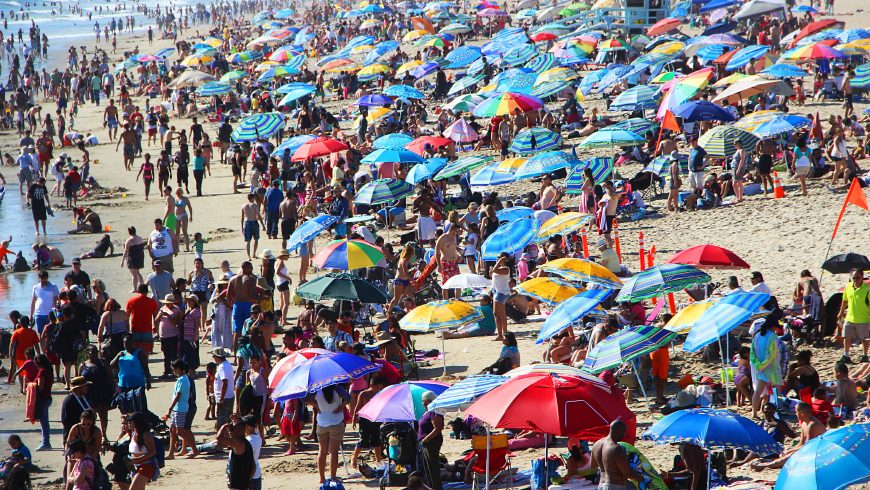
What is overtourism?
Overtourism is a neologism that indicates the overcrowding of tourists on a holiday destination. The term was first inserted in the Oxford dictionary in 2018 and nominated as the year’s word. Overtourism, literally “too much tourism” , is a complex phenomenon that we should analyze from various points of view. In essence, we could sum up the concept in one question. Is this place affected by the presence of more tourists than the place and the inhabitants can support?
When it comes to natural tourist destinations , tourism must respect flora, fauna, and microclimate. When the destination is a city , tourism must primarily r espect residents , as well as local culture and archaeological sites . The latter in particular are small microcosms blocked in time that tourism should protect. If this doesn’t happen, we talk about overtourism, or unsustainable tourism for the place, for nature, for the people who live there.
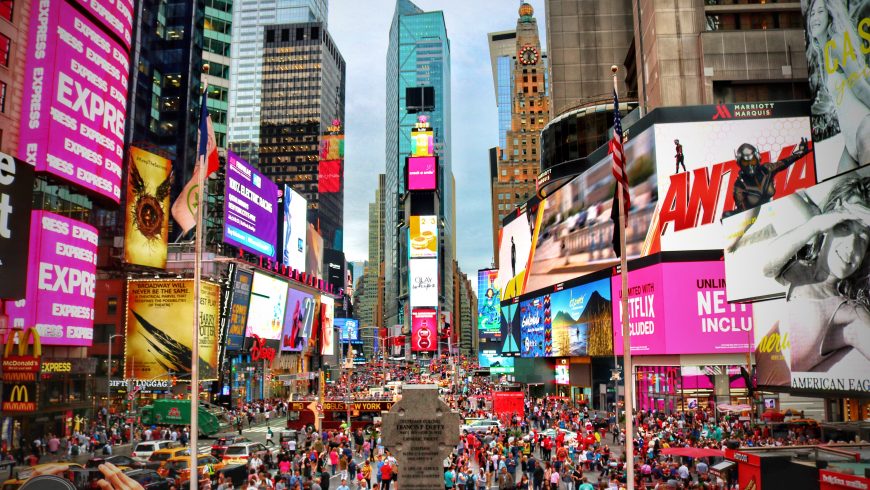
The Causes of overtourism
More than 1.4 billion people are moving around the world every year, and they are growing at an exponential rate. The World Tourism Organisation predicts that by 2030 the international flow of tourists will exceed 2 billion . This very high number of people focus on a few tourist destinations in the world, which suffer from the excessive presence of tourists . The causes of too much tourism are many. From the famous films that make tourist destinations famous to the ease with which you can reach any corner of the world. Also, we can name the cruises that bring large quantities around the seas. We talked about cruises and their environmental impact in this article .

Cultural tourism, a new trend
A trend of the moment is tourism i nfluenced by mass culture . According to this kind of tourism, people chose the destination based on social media , influencers, television programs and films. Tourism influenced by film and TV series products, also known as film tourism , has in some cases led to real disasters. An example is what is happening in the Pacific Islands : in Thailand at Maya Bay , where the film “The Beach” was shot with Leonardo Di Caprio. Over the years, tourists who wanted to see the film set invaded the small beach. This forced the Thai government to prohibit the entry of tourists to restore the delicate balance of the beautiful bay.
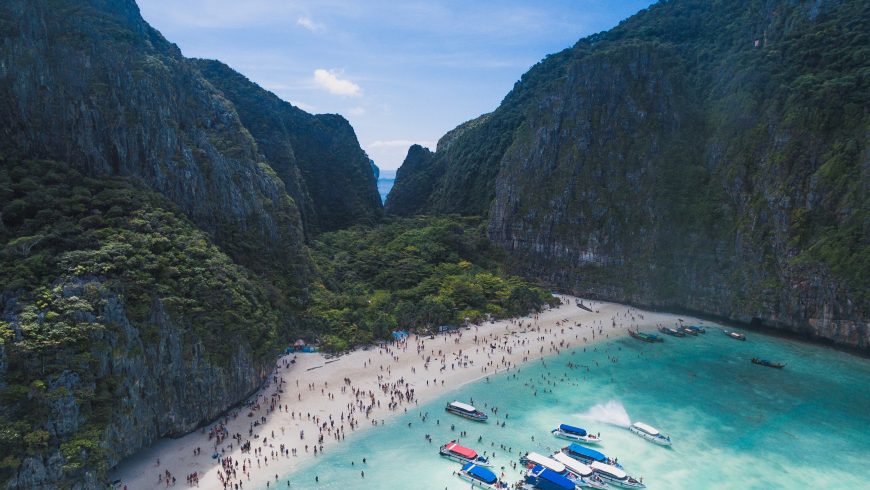
The increase in low-cost air flights and cruises is certainly one of the causes of Overtourism.
The numbers published by the World Tourism Organisation (Unwto) speak for themselves. Even in Italy , we have examples of how mass tourism damages the nature and residents of cities invaded by travelers. Venice , for example, is visited by about 20 million people a year. A number a little too high for such a delicate city, devastated also by cruise ships causing pollution .
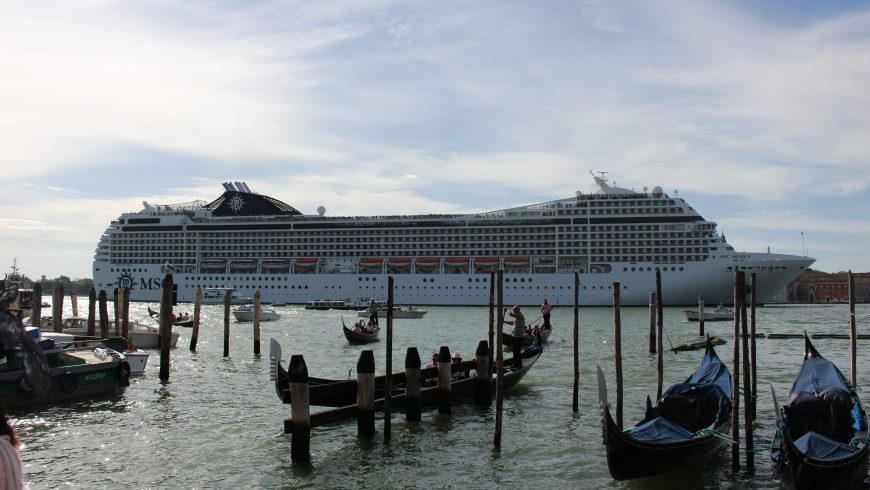
Even Florence , Capri and the Cinque Terre National Park in Liguria suffer from the excessive number of tourists arriving every year. This influx is leading the administrations of the various Italian municipalities to take steps to limit the number of revenues.

Consequences of overtourism
1 destruction of natural ecosystems.
The flora and fauna are usually the first to suffer overtourism in the most popular natural tourist destinations. In some natural destinations, environmental issues led to the destruction of entire ecosystems. Among these problems, we can mention deforestation, exploitation of the soil and pollution . But also, no policy of raising awareness and protecting natural environments. In some cases, this situation has no possibility of redemption, such as, for example, what happens to coral reefs around the world. As global warming and tourists irreparably ruined them, corals are part of a natural system that is becoming extinct.

2. Increase in the amount of waste
Another consequence of mass tourism is the large accumulation of waste that people don’t differentiate. Inevitably, it creates a major environmental problem of disposal and pollution. Boracay Island , in the Philippines, has been closed to restore the ecosystem after years of uncontrolled tourism. The waste problem is also very important on the island of Bali , which is trying to combat it thanks to the thought of Zero waste Bali.
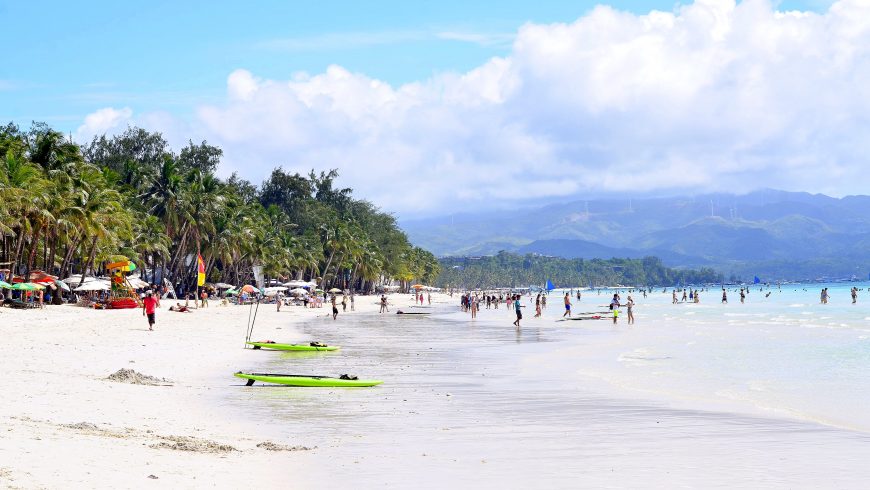
3. Escape and malaise of residents
Too much tourism affects mainly the locals. Across Europe, in cities like Barcelona or Venice, the phenomenon of overtourism has unleashed strong tensions from the inhabitants. Residents complain about the rising of housing prices and rentals. In effect, they inflated them due to the spread of online platforms such as Airbnb. But also, they talked about the disappearance of small shops, replaced by tourist shops, and the inviolability of their cities. The last consequence is the escape of residents from their cities, which have become tourist theatres, thus losing their authenticity.
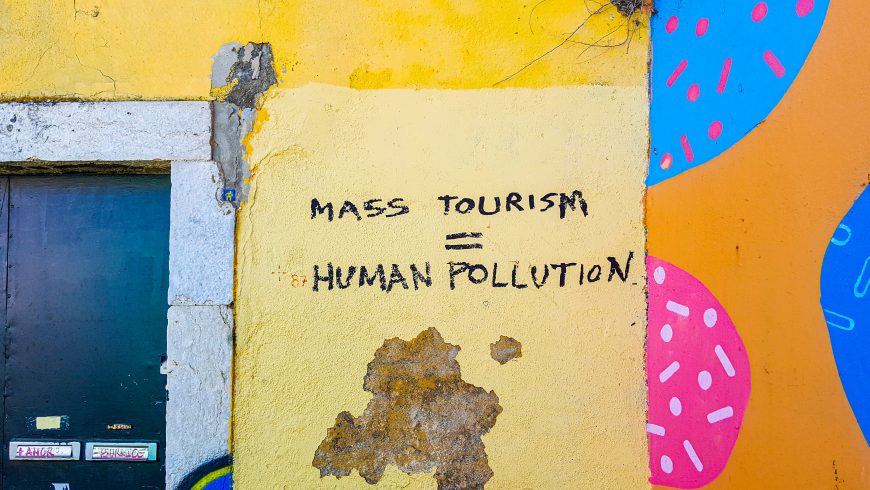
Solutions to overtourism for destinations
As tourist flows around the world increased, the World Tourism Organization (UNWTO) has dedicated an entire Report to overtourism. Certainly, there is not one single solution, but many small things that we can do during our holidays . The Report thus proposes 11 strategies and 68 measures to combat excessive tourism.
Here are the 11 suggestions that tourist destinations can follow to counter the phenomenon of overtourism.
- Encourage the dispersion of tourists within the city, and even beyond the territory, suggesting the visit of lesser-known destinations and less touristic areas.
- Promote tourism in different periods (for example out of season) and at different times from the most popular.
- Create new and different itineraries and tourist attractions.
- Review and improve regulations , such as closing some overcrowded areas to traffic.
- Attract more responsible types of travelers.
- ensure the benefits of tourism to local communities, for example by increasing the number of inhabitants employed in tourism, and by involving residents in the creation of tourism experiences.
- Develop and promote experiences in the city or territory that benefit both tourists and residents.
- Increase the infrastructure and services of the resort.
- Involve the local community in tourist decisions and choices.
- Educate travelers and tell them how to be more responsible and respectful of the place.
- Monitor and measure changes.
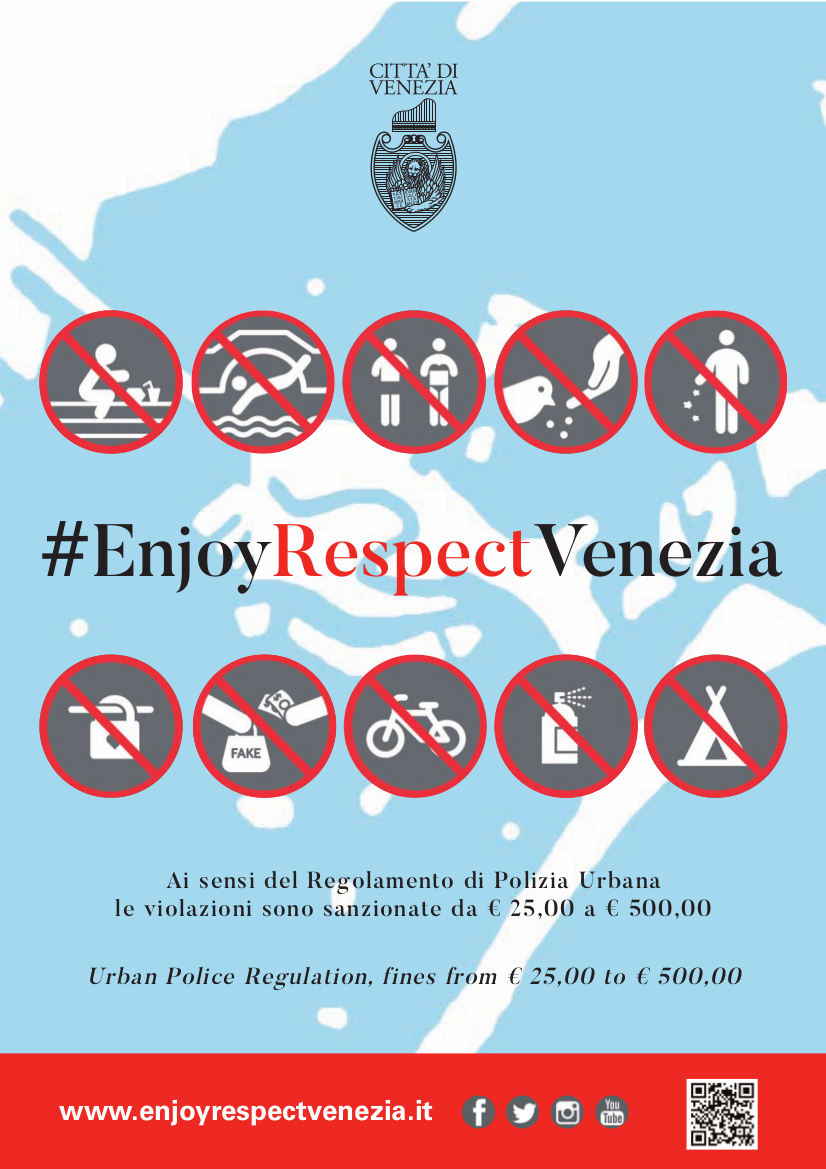
And what can we do?
With Ecobnb we promote responsible tourism , avoiding overcrowded famous destinations and promoting the close destinations. Often we don’t know what surrounds us and which beauties we can find without necessarily taking planes that emit huge amounts of CO2. Slow and sustainable tourism offers authentic locations. These places enrich local communities and those who invest in eco-sustainable activities. The real holiday could also be for you the relaxing and unplugging holiday. You could simply recharge the energies in contact with nature. Nonetheless, remember to try and lessen as much as possible for your environmental impact.
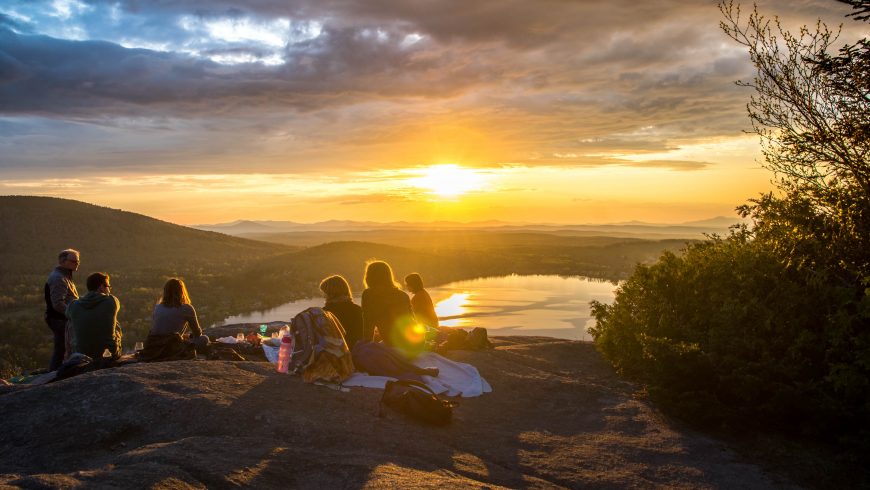
The good news is that each of us can do our part to counteract overtourism and promote sustainable tourism.
Here’s your vademecum
Here are 5 simple ideas , a vademecum, to promote quality tourism, instead of quantity, every time we travel.
- Avoid air flights and cruises, move by train and public transport whenever you can.
- Don’t take your decisions following the mass. If everyone goes to the mountains on August 15, why don’t you choose a different date?
- Organize your holidays in an alternative way, choose authentic and less touristy destinations .
- Travel out of season : spring and autumn are beautiful and less expensive seasons.
- Respect the places you visit (here you find 40 tips to travel green ), try to live like a local”, immerse yourself in the culture of the place and make friends with the inhabitants.
Cover image: photo by Elizeu Dias via Unsplash
You might also like
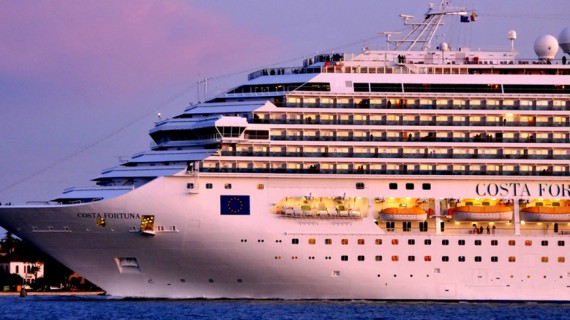
How do cruise ships impact on the environment
The cruise ship is the holiday that has grown faster than any other in the last 20 years. Despite the disaster of the Costa Concordia near the island of Giglio (Italy), cruises are becoming increasingly popular, coming to carry each year about 20 million passengers worldwide and 800,000 in Italy. But it is also the […]

A Cruise Ship Pollutes as One Million Cars
Cruise ships are often associated with luxury and total relaxation, but in reality, they represent huge damage to the environment and the health of passengers and port cities. Cruise ships not only create significant environmental damage but are extremely harmful to health due to their exhaust gases. This is what emerges from the 2016 Environmental […]
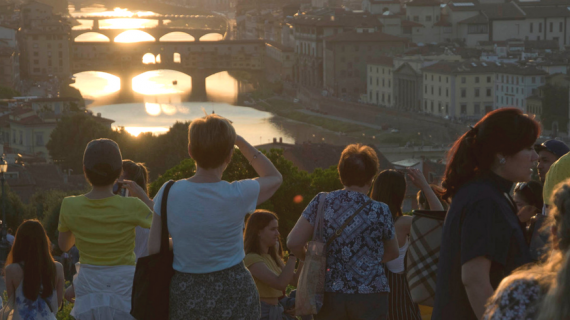
Save our cities from overtourism!
SET (Sud-Europe facing Overtourism): a network created by 15 European cities to denounce the destructive effects of mass tourism and promote the research for a new touristic system. Mass tourism brings enormous amounts of tourists in the main cities. The effects of the so-called overtourism are indeed severe. Cities lost their original artistic, natural and cultural heritage: […]

Pacific Islands: the Paradises ruined by ‘Overtourism’
‘Overtourism’: too much mass tourism threatens fragile ecosystems, such as the Pacific Islands. Philippines, Indonesia, and Thailand the most affected countries. Strategies to preserve destinations and promote responsible tourism are essential Admiring the photos of the dream beaches of some islands of Polynesia or the Philippines is not surprising if in the last few years […]

6 Advantages and Disadvantages of Ecotourism
Ecotourism has become one of the most popular forms of tourism in recent years, with more and more tourists looking for ways to travel in a sustainable and environmentally-friendly way.
However, like any form of tourism, ecotourism has its own set of advantages and disadvantages, and when investing in certain places, it is good to look out for tools with discounts like AirDNA promo code , which it helps to make smart investment decisions on where to get rental properties, even for ecotourism places.
In this article, we will explore the pros and cons of ecotourism, the different types of ecotourism, and the ecotourism activities available for eco-friendly tourists.

- Redaction Team
- June 9, 2023
- Body , Personal Development
What is Ecotourism?
Definition of ecotourism.
Ecotourism is a form of sustainable tourism that focuses on responsible travel practices that minimize the negative impact on the natural environment while promoting environmental awareness and cultural preservation.
The ecotourism industry aims to provide tourists with a deeper understanding and appreciation of local cultures and the natural environment.
Principles of Ecotourism
The principles of ecotourism include sustainable tourism practices, environmental protection, and support for local communities.
Ecotourism must fully involve local communities and indigenous people, respecting their cultures and traditions, and providing economic benefits to the local economy.
Types of Ecotourism
There are various types of ecotourism available for travelers, including adventure ecotourism, wildlife ecotourism, cultural ecotourism, and eco-lodges.
Advantages of Ecotourism
- Sustainable Tourism : Ecotourism is a form of sustainable tourist activities that focuses on reducing dependence on natural resources while promoting conservation efforts. This helps to ensure the long-term survival of local ecosystems and natural habitats.
- Conservation efforts : Ecotourism promotes conservation efforts by helping to protect natural habitats and ecosystems. Ecotourists can also participate in conservation activities like tree planting, wildlife monitoring, and beach cleanups, which help to preserve natural environments.
- Environmental Awareness : Ecotourism helps to promote environmental awareness and educate travelers about the importance of conservation efforts. Ecotourists can learn about ecosystems and biodiversity, and develop a deeper appreciation for the natural environment.
Disadvantages of Ecotourism
- Footprint on Ecosystems: Ecotourism can also have a negative impact on the environment, especially if not managed correctly. Ecotourism activities can sometimes leave a footprint on fragile ecosystems, which can cause long-lasting damage to the environment.
- Disruption of Local Communities : Ecotourism can also disrupt local people and their traditional ways of life. Increased tourism can bring about changes in local economies, social structures and even cause loss of culture and traditions.
- Threat to Local Wildlife : Ecotourism can also lead to a threat to local wildlife. Tourists may accidentally or intentionally disturb sensitive wildlife habitats and stress animals, putting them at risk of injury or disease.
Ecotourism Activities
Wildlife watching.
Wildlife watching is one of the most popular ecotourism activities, allowing eco-friendly tourists to appreciate local wildlife. However, it is important to remember that responsible wildlife watching practices must be followed to ensure the safety and wellbeing of the animals.
Hiking and Trekking
Hiking and trekking are popular ecotourism activities that allow travelers to explore natural environments and learn about local cultures and traditions. These activities can be highly educational while promoting fitness and wellbeing.
Snorkeling and Diving
Snorkeling and diving are also popular ecotourism activities that enable tourists to discover the marine environment and learn about local marine ecosystems and conservation efforts. However, it is important to be aware of the impact on underwater wildlife and the importance of following responsible diving practices.
Sustainable Tourism
Sustainable accommodation.
Sustainable accommodation is an important aspect of ecotourism. Eco-friendly hotels and lodges that utilize renewable energy, support local communities, and promote conservation efforts are becoming more and more popular with eco-tourists.
Reducing Dependence on Natural Resources
Eco-tourists should also aim to reduce dependence on natural resources during their travels, such as conserving water and reducing electricity use, to ensure a more sustainable tourism industry.
Cultural Preservation
Ecotourists can also help promote cultural preservation by supporting local communities and buying local products. This helps to preserve the preservation of local cultures and traditions, promoting more sustainable tourism practices.
Bottom Line with Ecotourism
Ecotourism has become very important and relevant in the tourism industry.
The advantages of ecotourism include a focus on sustainable tourism, conservation efforts, and environmental awareness, while disadvantages include footprints on ecosystems and disruption of local communities.
However, if managed correctly, ecotourism can provide economic and environmental benefits to local communities while preserving natural habitats and ecosystems for future generations.

Privacy Overview


Bali gives a snapshot of what ‘overtourism’ looks like in the developing world
PhD Candidate in Sustainable Travel, Bournemouth University
Disclosure statement
Rama Permana receives funding from the Indonesia Endowment Fund for Education Agency (LPDP). He is a chartered member and coordinator of the Tourism and Hospitality Cluster at Doctoral Epistemic of Indonesian in the United Kingdom (Doctrine UK).
Bournemouth University provides funding as a member of The Conversation UK.
View all partners
Barcelona residents marched against tourists in July after similar protests in Venice earlier in 2024. Recently, residents of Santorini in Greece were in uproar after a Facebook post reportedly asked them to stay home and make room for the thousands of tourists expected to arrive during the peak holiday season.
These are symptoms of overtourism : a situation where visits exceed a destination’s capacity, making residents angry and tourists miserable. Local governments have proposed tourism levies or entry fees to make visits more expensive and thereby limit how many people show up. Some tourism researchers have encouraged people to holiday in rural areas or poorer countries instead, to give a boost to their economies.
However, overtourism exists in the developing world too. Here’s what it looks like.
Travel on a tourist-swamped island
Bali is a major tourist destination in the Indonesian archipelago that accounts for nearly half of international arrivals in the country . Air travel is the most reliable way to get there, although a big source of carbon emissions , which inflame a climate crisis that is expected to disproportionately harm poorer countries like Indonesia . Roughly 15 million visitors arrived in 2023 – close to their level in 2019, before the pandemic.
Bali’s tourism-dependent economy ( providing 61% of regional GDP in 2019 ) was more or less frozen by COVID-19. Yet, for tourists who spent lockdown in cities, the pandemic also left Bali, and particularly the island’s rural parts , with a renewed lustre. Penglipuran, a traditional Balinese village in the central highlands, was attracting thousands of visitors every day in July .
Encouraging people to visit poorer areas can disadvantage residents, but in a different way to how people in Venice or Barcelona experience it. After all, roads and public transport in richer European cities are better maintained.

The steady rise in tourists mean the roads in Bali get busier every year . There is a roughly one-to-one ratio of vehicles to people on the island , while public transport use remains low . Congestion prevented travellers entering and leaving Bali’s airport for six hours ahead of New Year’s Eve 2023.
In rural Bali, the hilly terrain, tropical weather and poorer public transport mean residents must rely on cars and motorbikes. The resulting noise and pollution degrades the rural experience. Converting these vehicles to run on electricity would not solve the problem entirely if most power in Bali remains fossil-sourced . Nor would it cut road congestion.
Tourists want to visit lots of places in rural Bali with a reliable source of transport. The limited options have prompted many to rent cars or motorbikes, but weak traffic enforcement has allowed misbehaviour : tourists driving without shirts or helmets – or even licenses. The regional government temporarily banned motorbike rentals for foreigners in March 2023.
Despite chaotic traffic on the island, residents have found work transporting tourists informally for decades . That’s why efforts to ease congestion and travel chaos, by designing public transport for tour groups or free shuttle bus services, have met with local protests and the ire of vehicle rental businesses.
To travel or not to travel
Unbridled development squanders the mutual benefits that tourism can have for residents and visitors. Likewise, neither residents nor tourists should be prohibited from travelling, but should instead travel responsibly.

A railway transport plan that promises to connect Bali’s airport with Seminyak and Nusa Dua, the most popular areas in urban Bali, could help ease road traffic around the city centre. Local vehicle rental businesses could continue to operate in rural areas, but restrict their riders to less busy roads.
Poor destinations should be cautious about depending on tourism in the long term. The Balinese government is exploring its options in other sectors at least, such as agriculture and the digital economy .
Poorer destinations such as Bali are less well equipped than richer countries to manage the socioeconomic and environmental costs of overtourism. And ultimately, a swollen tourism sector contains the seeds of its own demise: declining environmental quality, unhappy residents and eventually, fewer tourists.

Don’t have time to read about climate change as much as you’d like? Get our award-winning weekly roundup in your inbox instead. Every Wednesday, The Conversation’s environment editor writes Imagine, a short email that goes a little deeper into just one climate issue. Join the 35,000+ readers who’ve subscribed so far.
- Overtourism
- Give me perspective

Administration and Events Assistant

Head of Evidence to Action

Supply Chain - Assistant/Associate Professor (Tenure-Track)

OzGrav Postdoctoral Research Fellow

Casual Facilitator: GERRIC Student Programs - Arts, Design and Architecture
- Top Stories
- Listen Live
- ArizonaSports.com
Arizona News
- Arizona Sports
- Arizona Business
- Arizona Votes
- Arizona Immigration
- Arizona Education
- Arizona Health
- Arizona Traffic
- Arizona Weather
- East Valley Youth Violence
- Arizona Technology
- Arizona Wildfires
- Community Spotlight
Sponsored Articles
- Arizona's Morning News
- The Mike Broomhead Show
- The Ramsey Show
- The Chris and Joe Show
- Outspoken with Bruce and Gaydos
- The Chad Benson Show
- Complete Lineup
- Silent Witness
- Rosie on the House
- Chew On This
- Data Doctors
- Kim Komando Tech Tips
- On-Air Schedule
- Staff Social Media
- Contests and Events
- Text Alerts
- Everyday Strong
ARIZONA NEWS
Arizona Office of Tourism reveals new branding to better advertise state’s unique features
Aug 26, 2024, 4:15 AM

The Arizona Office of Tourism unveiled a new state brand "Vibrant Arizona" on Friday, one that will more fully represent the state's diverse topography. (Arizona Office of Tourism Photo)
(Arizona Office of Tourism Photo)

BY PAYNE MOSES

PHOENIX — The Arizona Office of Tourism released a new branding palette on Friday to shift the perception of the Grand Canyon state in the eyes of national and global audiences alike.
The multi-faceted brand heralded “Vibrant Arizona” features a logo that seeks to highlight the southwestern state’s topography, colors and six defining pillars of the Arizona experience.
Input from over 2,000 Arizonans informed the effort of AOT, Heart & Soul Marketing and Welcome Strategies, according to a press release.
RELATED STORIES

ADOT adds 3 new options to triple-digit list of specialty license plates

Scottsdale rated among best US cities for recreation, recent study shows
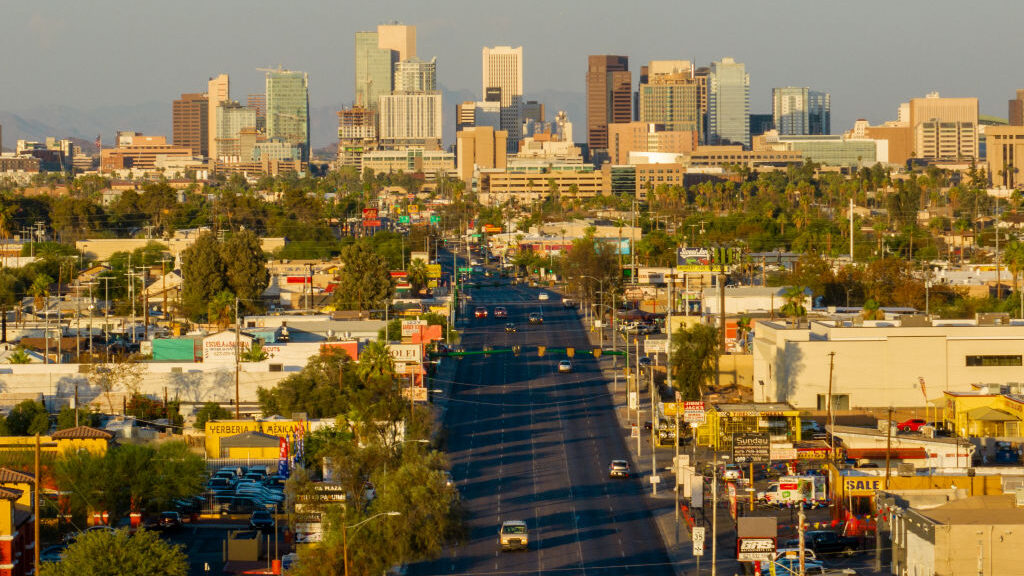
Mesa, Phoenix ranked among best-run US cities, per WalletHub
Over the past year, AOT held in-person and digital listening sessions in 57 state communities including the Navajo Nation, Hopi Tribe and Salt River Pima-Maricopa Indian Community.
“The key to the success of our refreshed state brand is that Arizonans built and own this story about who we are and what we hold dear,” Lisa Urias, CEO of the Arizona Office of Tourism, said in a press release.
“Talking to a wide range of people across the state helped us ensure our updated brand reflects what Arizonans love about the state and want amplified. This brand emerged as a reflection of those amazing experiences.”
What will the new branding look like in practice?
The primary logo spells out the state name across Arizona’s signature desert landscape, with the “O” carrying the main design feature. The “O” exhibits a pattern made up of mountains, a rising sun and location-based icons such as Saguaro cacti and ponderosa pines.
The newly imagined pattern was created by Hopi and Isleta Pueblo artist Kevin Coochwytewa and made possible by Welcome Strategies.
AOT compared its overall design to that of a woven basket, it being comprised of 14 different symbols that expand outwards. The pattern is meant to exude spiritual and utilitarian significance for the many indigenous peoples that call Arizona home.
Four abbreviated “AZ” logos were also unveiled. Each variation has a mountain landscape at the base of the two letters, three distinguished with a Saguaro cactus, hummingbird or ponderosa pine wedged by the “Z” while one logo option has just plain text.
What are the six defining pillars of the Arizona experience?
After those lengthy conversations with Arizona citizens, AOT determined the following as best descriptors of the state’s offerings: majestic beauty, vibrant arts, culture and experiences, abundant diversity, welcoming warmth and strong connection.
How will this new brand be implemented?
AOT’s “Vibrant Arizona” will be launched as a multichannel campaign in early 2025. Its primary purpose will be to sell Arizona to surrounding markets, other U.S. cities and top international audiences.
The new set of logos will also be unifying symbols for state agencies and provide a complete view of what services are offered by each institution.
“ Vibrant Arizona will help change the perception of our great state and make us more competitive for both tourism and business. Visit Phoenix is excited to embark on this journey with the state of Arizona, ” Ron Price, president and CEO of Visit Phoenix, said in a press release.
We want to hear from you.
Have a story idea or tip? Pass it along to the KTAR News team here .

Audrey Jensen/Phoenix Business Journal
Glendale voters to have final say on $20 minimum wage measure
An initiative to increase hotel and event worker wages in Glendale is headed to the ballot box this November after a key ruling.
10 minutes ago

Bailey Leasure
Korean company KoMiCo signs agreement to build semiconductor facility in Mesa
Korean company KoMiCo signed an agreement to build a facility for semiconductor equipment part cleaning and repair in Mesa.
8 hours ago

Gilbert woman found dead in Colorado River following flash flood
A Gilbert woman was found dead in the Colorado River on Sunday after going missing following a flash flood.
10 hours ago

Weekend wrap-up: Here are the biggest news stories from August 23-25
From Former President Donald Trump speaking at a rally in Glendale to a Mesa business owner sentenced for defrauding Arizona's Medicaid program, here are some of the biggest Valley news stories from over the weekend.

Suspect arrested after fatal shooting in Mesa
One man is dead and another is in jail after a fatal shooting in Mesa early on Saturday morning, authorities said.
13 hours ago

Gin Blossoms to headline new music and food festival in Gilbert
Late 80's rock band and Arizona's own Gin Blossoms will headline the new Genesis of Chandler music and food festival in Gilbert this fall.
15 hours ago

Dr. Shanyn Lancaster, Family & Sports Medicine physician, Midwestern University Comprehensive Care Clinic – Central Phoenix
Exercise is truly your best medicine
“You never slow down, you never grow old”. – Tom Petty

Midwestern University
Midwestern University Clinic visits boost student training & community health
Going to a Midwestern University Clinic can help make you feel good in more ways than one.

Midwestern University Clinics: transforming health care in the valley
Midwestern University, long a fixture of comprehensive health care education in the West Valley, is also a recognized leader in community health care.
You are using an outdated browser. Upgrade your browser today or install Google Chrome Frame to better experience this site.
- Section 6 - Perspectives : Avoiding Poorly Regulated Medicines & Medical Products During Travel
- Section 7 - Pregnant Travelers
Medical Tourism
Cdc yellow book 2024.
Author(s): Matthew Crist, Grace Appiah, Laura Leidel, Rhett Stoney
- Categories Of Medical Tourism
The Pretravel Consultation
Risks & complications, risk mitigation, additional guidance for us health care providers.
Medical tourism is the term commonly used to describe international travel for the purpose of receiving medical care. Medical tourists pursue medical care abroad for a variety of reasons, including decreased cost, recommendations from friends or family, the opportunity to combine medical care with a vacation destination, a preference to receive care from a culturally similar provider, or a desire to receive a procedure or therapy not available in their country of residence.
Medical tourism is a worldwide, multibillion-dollar market that continues to grow with the rising globalization of health care. Surveillance data indicate that millions of US residents travel internationally for medical care each year. Medical tourism destinations for US residents include Argentina, Brazil, Canada, Colombia, Costa Rica, Cuba, the Dominican Republic, Ecuador, Germany, India, Malaysia, Mexico, Nicaragua, Peru, Singapore, and Thailand. Categories of procedures that US medical tourists pursue include cancer treatment, dental care, fertility treatments, organ and tissue transplantation, and various forms of surgery, including bariatric, cosmetic, and non-cosmetic (e.g., orthopedic).
Most medical tourists pay for their care at time of service and often rely on private companies or medical concierge services to identify foreign health care facilities. Some US health insurance companies and large employers have alliances with health care facilities outside the United States to control costs.
Categories of Medical Tourism
Cosmetic tourism.
Cosmetic tourism, or travel abroad for aesthetic surgery, has become increasingly popular. The American Society of Plastic Surgeons (ASPS) reports that most cosmetic surgery patients are women 40–54 years old. The most common procedures sought by cosmetic tourists include abdominoplasty, breast augmentation, eyelid surgery, liposuction, and rhinoplasty. Popular destinations often are marketed to prospective medical tourists as low cost, all-inclusive cosmetic surgery vacations for elective procedures not typically covered by insurance. Complications, including infections and surgical revisions for unsatisfactory results, can compound initial costs.
Non-Cosmetic Medical Tourism
Cancer treatment.
Oncology, or cancer treatment, tourism often is pursued by people looking for alternative treatment options, better access to care, second opinions, or a combination of these. Oncology tourists are a vulnerable patient population because the fear caused by a cancer diagnosis can lead them to try potentially risky treatments or procedures. Often, the treatments or procedures used abroad have no established benefit, placing the oncology tourist at risk for harm due to complications (e.g., bleeding, infection) or by forgoing or delaying approved therapies in the United States.
Dental Care
Dental care is the most common form of medical tourism among US residents, in part due to the rising cost of dental care in the United States; a substantial proportion of people in the United States do not have dental insurance or are underinsured. Dentists in destination countries might not be subject to the same licensure oversight as their US counterparts, however. In addition, practitioners abroad might not adhere to standard infection-control practices used in the United States, placing dental tourists at a potential risk for infection due to bloodborne or waterborne pathogens.
Fertility Treatments
Fertility tourists are people who seek reproductive treatments in another country. Some do so to avoid associated barriers in their home country, including high costs, long waiting lists, and restrictive policies. Others believe they will receive higher quality care abroad. People traveling to other countries for fertility treatments often are in search of assisted reproductive technologies (e.g., artificial insemination by a donor, in vitro fertilization). Fertility tourists should be aware, however, that practices can vary in their level of clinical expertise, hygiene, and technique.
Physician-Assisted Suicide
The practice of a physician facilitating a patient’s desire to end their own life by providing either the information or the means (e.g., medications) for suicide is illegal in most countries. Some people consider physician-assisted suicide (PAS) tourism, also known as suicide travel or suicide tourism, as a possible option. Most PAS tourists have been diagnosed with a terminal illness or suffer from painful or debilitating medical conditions. PAS is legal in Belgium, Canada, Luxembourg, the Netherlands, Switzerland, and New Zealand, making these the destinations selected by PAS travelers.
Rehab Tourism for Substance Use Disorders
Rehab tourism involves travel to another country for substance use disorder treatment and rehabilitation care. Travelers exploring this option might be seeking a greater range of treatment options at less expense than what is available domestically (see Sec. 3, Ch. 5, Substance Use & Substance Use Disorders , and Box 3-10 for pros and cons of rehab tourism).
Transplant Procedures
Transplant tourism refers to travel for receiving an organ, tissue, or stem cell transplant from an unrelated human donor. The practice can be motivated by reduced cost abroad or an effort to reduce the waiting time for organs. Xenotransplantation refers to receiving other biomaterial (e.g., cells, tissues) from nonhuman species, and xenotransplantation regulations vary from country to country. Many procedures involving injection of human or nonhuman cells have no scientific evidence to support a therapeutic benefit, and adverse events have been reported.
Depending on the location, organ or tissue donors might not be screened as thoroughly as they are in the United States; furthermore, organs and other tissues might be obtained using unethical means. In 2009, the World Health Organization released the revised Guiding Principles on Human Cell, Tissue, and Organ Transplantation, emphasizing that cells, tissues, and organs should be donated freely, in the absence of any form of financial incentive.
Studies have shown that transplant tourists can be at risk of receiving care that varies from practice standards in the United States. For instance, patients might receive fewer immunosuppressive drugs, increasing their risk for rejection, or they might not receive antimicrobial prophylaxis, increasing their risk for infection. Traveling after a procedure poses an additional risk for infection in someone who is immunocompromised.
Ideally, medical tourists will consult a travel medicine specialist for travel advice tailored to their specific health needs 4–6 weeks before travel. During the pretravel consultation, make certain travelers are up to date on all routine vaccinations, that they receive additional vaccines based on destination, and especially encourage hepatitis B virus immunization for unvaccinated travelers (see Sec. 2, Ch. 3, Vaccination & Immunoprophylaxis & General Principles , and Sec. 5, Part 2, Ch. 8, Hepatitis B ). Counsel medical tourists that participating in typical vacation activities (e.g., consuming alcohol, participating in strenuous activity or exercise, sunbathing, swimming, taking long tours) during the postoperative period can delay or impede healing.
Advise medical tourists to also meet with their primary care provider to discuss their plan to seek medical care outside the United States, to address any concerns they or their provider might have, to ensure current medical conditions are well controlled, and to ensure they have a sufficient supply of all regular medications to last the duration of their trip. In addition, medical tourists should be aware of instances in which US medical professionals have elected not to treat medical tourists presenting with complications resulting from recent surgery, treatment, or procedures received abroad. Thus, encourage medical tourists to work with their primary care provider to identify physicians in their home communities who are willing and available to provide follow-up or emergency care upon their return.
Remind medical tourists to request copies of their overseas medical records in English and to provide this information to any health care providers they see subsequently for follow-up. Encourage medical tourists to disclose their entire travel history, medical history, and information about all surgeries or medical treatments received during their trip.
All medical and surgical procedures carry some risk, and complications can occur regardless of where treatment is received. Advise medical tourists not to delay seeking medical care if they suspect any complication during travel or after returning home. Obtaining immediate care can lead to earlier diagnosis and treatment and a better outcome.
Among medical tourists, the most common complications are infection related. Inadequate infection-control practices place people at increased risk for bloodborne infections, including hepatitis B, hepatitis C, and HIV; bloodstream infections; donor-derived infections; and wound infections. Moreover, the risk of acquiring antibiotic-resistant infections might be greater in certain countries or regions; some highly resistant bacterial (e.g., carbapenem-resistant Enterobacterales [CRE]) and fungal (e.g., Candida auris ) pathogens appear to be more common in some countries where US residents travel for medical tourism (see Sec. 11, Ch. 5, Antimicrobial Resistance ).
Several infectious disease outbreaks have been documented among medical tourists, including CRE infections in patients undergoing invasive medical procedures in Mexico, surgical site infections caused by nontuberculous mycobacteria in patients who underwent cosmetic surgery in the Dominican Republic, and Q fever in patients who received fetal sheep cell injections in Germany.
Noninfectious Complications
Medical tourists have the same risks for noninfectious complications as patients receiving medical care in the United States. Noninfectious complications include blood clots, contour abnormalities after cosmetic surgery, and surgical wound dehiscence.
Travel-Associated Risks
Traveling during the post-operative or post-procedure recovery period or when being treated for a medical condition could pose additional risks for patients. Air travel and surgery independently increase the risk for blood clots, including deep vein thrombosis and pulmonary emboli (see Sec. 8, Ch. 3, Deep Vein Thrombosis & Pulmonary Embolism ). Travel after surgery further increases the risk of developing blood clots because travel can require medical tourists to remain seated for long periods while in a hypercoagulable state.
Commercial aircraft cabin pressures are roughly equivalent to the outside air pressure at 6,000–8,000 feet above sea level. Medical tourists should not fly for 10 days after chest or abdominal surgery to avoid risks associated with changes in atmospheric pressure. ASPS recommends that patients undergoing laser treatments or cosmetic procedures to the face, eyelids, or nose, wait 7–10 days after the procedure before flying. The Aerospace Medical Association published medical guidelines for air travel that provide useful information on the risks for travel with certain medical conditions.
Professional organizations have developed guidance, including template questions, that medical tourists can use when discussing what to expect with the facility providing the care, with the group facilitating the trip, and with their own domestic health care provider. For instance, the American Medical Association developed guiding principles on medical tourism for employers, insurance companies, and other entities that facilitate or incentivize medical care outside the United States ( Box 6-07 ). The American College of Surgeons (ACS) issued a similar statement on medical and surgical tourism, with the additional recommendation that travelers obtain a complete set of medical records before returning home to ensure that details of their care are available to providers in the United States, which can facilitate continuity of care and proper follow-up, if needed.
Box 6-07 American Medical Association’s guiding principles on medical tourism 1
- Employers, insurance companies, and other entities that facilitate or incentivize medical care outside the United States should adhere to the following principles:
- Receiving medical care outside the United States must be voluntary.
- Financial incentives to travel outside the United States for medical care should not inappropriately limit the diagnostic and therapeutic alternatives that are offered to patients or restrict treatment or referral options.
- Patients should only be referred for medical care to institutions that have been accredited by recognized international accrediting bodies (e.g., the Joint Commission International or the International Society for Quality in Health Care).
- Prior to travel, local follow-up care should be coordinated, and financing should be arranged to ensure continuity of care when patients return from medical care outside the United States.
- Coverage for travel outside the United States for medical care should include the costs of necessary follow-up care upon return to the United States.
- Patients should be informed of their rights and legal recourse before agreeing to travel outside the United States for medical care.
- Access to physician licensing and outcome data, as well as facility accreditation and outcomes data, should be arranged for patients seeking medical care outside the United States.
- The transfer of patient medical records to and from facilities outside the United States should be consistent with Health Insurance Portability and Accountability Action (HIPAA) guidelines.
- Patients choosing to travel outside the United States for medical care should be provided with information about the potential risks of combining surgical procedures with long flights and vacation activities.
1 American Medical Association (AMA). New AMA Guidelines on Medical Tourism . Chicago: AMA; 2008.
Reviewing the Risks
Multiple resources are available for providers and medical tourists assessing medical tourism–related risks (see Table 6-02 ). When reviewing the risks associated with seeking health care abroad, encourage medical tourists to consider several factors besides the procedure; these include the destination, the facility or facilities where the procedure and recovery will take place, and the treating provider.
Make patients aware that medical tourism websites marketing directly to travelers might not include (or make available) comprehensive details on the accreditations, certifications, or qualifications of advertised facilities or providers. Local standards for facility accreditation and provider certification vary, and might not be the same as those in the United States; some facilities and providers abroad might lack accreditation or certification. In some locations, tracking patient outcome data or maintaining formal medical record privacy or security policies are not standard practices.
Medical tourists also should be aware that the drugs and medical products and devices used in other countries might not be subject to the same regulatory scrutiny and oversight as in the United States. In addition, some drugs could be counterfeit or otherwise ineffective because the medication expired, is contaminated, or was improperly stored (for more details, see the previous chapter in this section, . . . perspectives: Avoiding Poorly Regulated Medicines & Medical Products During Travel ).
Table 6-02 Online medical tourism resources
Checking credentials.
ACS recommends that medical tourists use internationally accredited facilities and seek care from providers certified in their specialties through a process equivalent to that established by the member boards of the American Board of Medical Specialties. Advise medical tourists to do as much advance research as possible on the facility and health care provider they are considering using. Also, inform medical tourists that accreditation does not guarantee a good outcome.
Accrediting organizations (e.g., The Joint Commission International, Accreditation Association for Ambulatory Health Care) maintain listings of accredited facilities outside of the United States. Encourage prospective medical tourists to review these sources before committing to having a procedure or receiving medical care abroad.
ACS, ASPS, the American Society for Aesthetic Plastic Surgery, and the International Society of Aesthetic Plastic Surgery all accredit physicians abroad. Medical tourists should check the credentials of health care providers with search tools provided by relevant professional organizations.
Travel Health Insurance
Before travel, medical tourists should check their domestic health insurance plan carefully to understand what services, if any, are covered outside the United States. Additionally, travelers might need to purchase supplemental medical insurance coverage, including medical evacuation insurance; this is particularly important for travelers going to remote destinations or places lacking medical facilities that meet the standards found in high-income countries (see Sec. 6, Ch. 1, Travel Insurance, Travel Health Insurance & Medical Evacuation Insurance ). Medical tourists also should be aware that if complications develop, they might not have the same legal recourse as they would if they received their care in the United States.
Planning for Follow-Up Care
Medical tourists and their domestic physicians should plan for follow-up care. Patients and clinicians should establish what care will be provided abroad, and what the patient will need upon return. Medical tourists should make sure they understand what services are included as part of the cost for their procedures; some overseas facilities and providers charge substantial fees for follow-up care in addition to the base cost. Travelers also should know whether follow-up care is scheduled to occur at the same facility as the procedure.
Health care facilities in the United States should have systems in place to assess patients at admission to determine whether they have received medical care in other countries. Clinicians should obtain an explicit travel history from patients, including any medical care received abroad. Patients who have had an overnight stay in a health care facility outside the United States within 6 months of presentation should be screened for CRE. Admission screening is available free of charge through the Antibiotic Resistance Laboratory Network .
Notify state and local public health as soon as medical tourism–associated infections are identified. Returning patients often present to hospitals close to their home, and communication with public health authorities can help facilitate outbreak recognition. Health care facilities should follow all disease reporting requirements for their jurisdiction. Health care facilities also should report suspected or confirmed cases of unusual antibiotic resistance (e.g., carbapenem-resistant organisms, C. auris ) to public health authorities to facilitate testing and infection-control measures to prevent further transmission. In addition to notifying the state or local health department, contact the Centers for Disease Control and Prevention at [email protected] to report complications related to medical tourism.
The following authors contributed to the previous version of this chapter: Isaac Benowitz, Joanna Gaines
Bibliography
Adabi K, Stern C, Weichman K, Garfein ES, Pothula A, Draper L, et al. Population health implications of medical tourism. Plast Reconstr Surg. 2017;140(1):66–74.
Al-Shamsi, H, Al-Hajelli, M, Alrawi, S. Chasing the cure around the globe: medical tourism for cancer care from developing countries. J Glob Onc. 2018;4:1–3.
Kracalik I, Ham C, Smith AR, Vowles M, Kauber K, Zambrano M, et al. (2019). Notes from the field: Verona integron-encoded metallo-β-lactamase–producing carbapenem-resistant Pseudomonas aeruginosa infections in U.S. residents associated with invasive medical procedures in Mexico, 2015–2018. MMWR Morb Mortal Wkly Rep. 2019;68(20):463–4.
Pavli A, Maltezou HC. Infectious complications related to medical tourism. J Travel Med. 2021;28(1):taaa210.
Pereira RT, Malone CM, Flaherty GT. Aesthetic journeys: a review of cosmetic surgery tourism. J Travel Med. 2018;25(1):tay042.
Robyn MP, Newman AP, Amato M, Walawander M, Kothe C, Nerone JD, et al. Q fever outbreak among travelers to Germany who received live cell therapy & United States and Canada, 2014. MMWR Morb Mortal Wkly Rep. 2015;64(38):1071–3.
Salama M, Isachenko V, Isachenko E, Rahimi G, Mallmann P, Westphal LM, et al. Cross border reproductive care (CBRC): a growing global phenomenon with multidimensional implications (a systematic and critical review). J Assist Reprod Genet. 2018;35(7):1277–88.
Schnabel D, Esposito DH, Gaines J, Ridpath A, Barry MA, Feldman KA, et al. Multistate US outbreak of rapidly growing mycobacterial infections associated with medical tourism to the Dominican Republic, 2013–2014. Emerg Infect Dis. 2016;22(8):1340–7.
Stoney RJ, Kozarsky PE, Walker AT, Gaines JL. Population-based surveillance of medical tourism among US residents from 11 states and territories: findings from the Behavioral Risk Factor Surveillance System. Infect Control Hosp Epidemiol. 2022;43(7):870–5.
File Formats Help:
- Adobe PDF file
- Microsoft PowerPoint file
- Microsoft Word file
- Microsoft Excel file
- Audio/Video file
- Apple Quicktime file
- RealPlayer file
- Zip Archive file
The pros and cons of adventure tourism
Is it really worth it to take a risky vacation?
- Newsletter sign up Newsletter
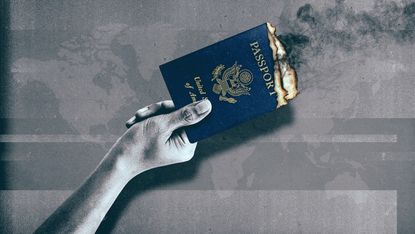
The implosion of the Titan submersible as it plunged 12,500 feet under the sea to view the wreckage of the Titanic, leaving all five people onboard dead, left many asking one question: Is this type of adventure really worth it?
The risks of traveling on the Titan were well-documented. OceanGate, the company that built the submersible, reportedly made participants sign a waiver that mentioned death three times on the first page. OceanGate was also warned by industry experts that the vessel was unsafe. The five travelers still made the trip, and one of the victims, Shazada Dahwood, was "absolutely obsessed" with seeing the Titanic, his sister told NBC News .
Is this type of trip, often called adventure tourism , worth the risk to somebody's life? Do the negatives and risks of climbing a big mountain or trekking through a remote jungle outweigh the positives, or is there something significant to be gained from adventure expeditions?
Subscribe to The Week
Escape your echo chamber. Get the facts behind the news, plus analysis from multiple perspectives.

Sign up for The Week's Free Newsletters
From our morning news briefing to a weekly Good News Newsletter, get the best of The Week delivered directly to your inbox.
Pro: People can learn about the world
Adventure tourism — and travel in general — can give people "an opportunity to see the world from a different perspective, form meaningful relationships, and develop new skills," travel writer Emily Lush reported . This type of tourism also lets travelers have "deeper and more meaningful travel experiences," a phenomenon which "has never been more appealing."
Taking on exotic experiences allows people to "broaden their horizons, learn new skills, and appreciate diversity," per a LinkedIn report. For those who haven't traveled often , or at all, adventure tourism can "foster a sense of connection, purpose, and gratitude, as travelers can contribute to social and environmental causes."
Con: It's dangerous
Perhaps the most glaring negative: Adventure tourism can be hazardous, and the "risk for illness and injury with adventure travel is much greater," Christopher Van Tilburg wrote for the CDC's 2024 travel guide . The risk of "illness and injury is a function of two variables: probability and consequence," Van Tilburg added. He noted that adventure tourism destinations "can be remote and lack access to care," and "trips are often goal-oriented, which can cause travelers to exceed safety limits and take increased risks."
This type of tourism is growing among "thrill-seekers looking for an adrenaline rush, pushing the boundaries of conventional travel and, sometimes, of safe travel," Samantha Delouya reported for CNN .
Sign up for Today's Best Articles in your inbox
A free daily email with the biggest news stories of the day – and the best features from TheWeek.com
Pro: It can improve your health
Adventure travel, as with any physical activity, can have positive health effects. While some people may just go to the gym, "Wouldn't it be more fun to get your exercise while sailing and soaring through the Alpine Arctic and witnessing some of the planet's awe-inspiring landscapes?" Amanda Wells argued for Quark Expeditions .
There are also reported mental health benefits, as "travel is great for relieving stress and improving your general outlook on life," according to the World Travel and Tourism Council . Physical activities "like walking, hiking, and skiing in scenic areas can help you become more hopeful," the organization added.
Con: It's often expensive
Getting onboard the Titan submersible cost $250,000, and similar expeditions often exist "to provide exclusive, expensive, and dangerous travel itineraries to the world's wealthiest would-be explorers," Spencer Buell reported for The Boston Globe . Even with the clear dangers, "Previously unthinkable treks [have] become more accessible to anyone with deep enough pockets," Buell added.
Despite its high costs, the Titan incident "will not dampen demand for 'extreme' tourism where a rescue is unlikely or even impossible," Dr. Adele Doran, principal lecturer in adventure tourism and recreation at Sheffield Hallam University, told Insider .
Pro: It can boost local economies
Adventure travel can prop up smaller economies, helping "free developing countries from downward-spiraling cycles of human poverty and environmental degradation," Kim Joyce reported for USA Today . The promotion of adventure expeditions "improves the community's social and economic health , and elevates community morale —which can lead to more opportunities for investment."
Local economies can be improved "in many ways, from hosting travel groups, to support services such as food and transportation," Elizabeth Sobiski added for The Arizona Republic . This can be especially prevalent in economically depressed areas, where "jobs in transporting, housing, feeding, and entertaining visitors are created."
Con: It can negatively impact the environment
Adventure tourism — and tourism of all types — can result in "pollution and littering, as well as damage to natural habitats. It can also cause problems for locals, who may feel they are being taken advantage of or threatened," Iqbal Uddin Abbasi wrote for LinkedIn .
There are also " environmental hazards associated with adventure tourism activities such as kayaking, rappelling, and scuba diving," Abassi added. These hazards have increased as a result of a changing planet, and the "impacts of climate change mean we need to keep our eyes more open to respond to the changes, and keep reviewing our risk assessments," Christina Beckmann, a climate expert with the Adventure Travel Trade Association, told BBC News .
Justin Klawans has worked as a staff writer at The Week since 2022. He began his career covering local news before joining Newsweek as a breaking news reporter, where he wrote about politics, national and global affairs, business, crime, sports, film, television and other Hollywood news. Justin has also freelanced for outlets including Collider and United Press International.

Cartoons Saturday's cartoons - an ice cream deterrent, billion dollar shade, and more
By The Week US Published 24 August 24

The Explainer The best-known figure on the UK’s extreme-right has been accused of playing a part in inciting the recent riots
By The Week UK Published 24 August 24

Talking Point Australian Olympic breakdancer Rachael Gunn has become 'a worldwide meme'
- Contact Future's experts
- Terms and Conditions
- Privacy Policy
- Cookie Policy
- Advertise With Us
The Week is part of Future plc, an international media group and leading digital publisher. Visit our corporate site . © Future US, Inc. Full 7th Floor, 130 West 42nd Street, New York, NY 10036.
- How to Tie a Tie
- Best Coffee Beans
- How to Shape a Beard
- Best Sweaters for Men
- Most Expensive Cognac
- Monos vs Away Luggage
- Best Luxury Hotel Chains
- Fastest Cars in the World
- Ernest Hemingway Books
- What Does CBD Feel Like?
- Canada Goose Alternatives
- Fastest Motorcycles in the World
Sri Lanka to offer free 30-day tourist visas to select countries
Starting october 1, sri lanka makes visiting easier.

Beginning October 1, Sri Lanka will offer free 30-day tourist visas to citizens from 35 nations, including the U.S. The six-month pilot program aims to boost tourism , a central part of the country’s economy. The policy waives the typical $50 fee and occurs during the island’s peak travel period, from December through mid-April.
Tourism rebounds in Sri Lanka
From the beginning of 2024 through August 19, Sri Lanka brought in 1.3 million tourists. Tourism revenue topped $1.5 billion from January through June, marking a 78% increase year over year. The country hopes to build on that success and end the year with $4 billion in revenue and 2.5 million visitors. The new visa program and the country’s “You’ll Come Back for More” global tourism marketing campaign look to keep the momentum going.
During COVID-19 and a 2022 financial crisis, Sri Lanka saw its tourism figures tumble, and the resurgence is welcome news for the country’s economy. 2023 began the turnaround, and the positive energy continued into 2024. According to the Sri Lanka Development Authority, India brings in the most visitors, at 246,922, and with the UK next at 123,992.
Cabinet spokesman and Transport Minister Bandula Gunawardana said: “The aim of the government is to transform Sri Lanka into a free visa country, much like Singapore, Thailand, and Vietnam to tap into the benefits of a rapidly growing tourism industry.”
The following countries’ citizens receive free 30-day tourist visas:
- United States
- United Kingdom
- Netherlands
- Saudi Arabia
- South Korea
- United Arab Emirates
- Switzerland
- New Zealand
- Czech Republic
Editors’ Recommendations
- A new study says digital nomads should travel to these 6 countries
- Wellness retreat debuts in Mexico’s wine country
- Venice limits tourist group sizes — how the new rules will affect your trip
- A free-for-all no more: Southwest to begin assigning seats and offering premium options
- Be 007 for a day: Aston Martin celebrates Goldfinger’s 60th anniversary
- Destinations

With the 2024 Olympics putting Paris in the global spotlight, millions of visitors are flocking to the City of Light. Known for its iconic landmarks and world-class cuisine, Paris is undoubtedly a dream destination. But what if you find yourself with a few extra days in Paris with nothing to do? Luckily, there are several hidden gems just a short trip from the Paris city center, many of which are less than an hour away. These day trips from Paris offer a refreshing escape from the hustle and bustle of the capital city. 1. Loire Valley
Along Australia’s west coast, the Kimberley Region contains untouched landscapes, with horizontal waterfalls, rock formations, and pristine waters lining the landscape. Aboriginal culture offers a fascinating look into the past. The Montgomery Reef — the globe’s biggest inshore reef — rises from the ocean when the tide recedes. They’re all sights to behold, and increasingly, accessed via cruise ship.
Back in 2022, only two cruise lines ran trips in the region. But this year, that’s up to at least eight, including Scenic, Silversea Cruises, Ponant, Lindblad Expeditions, and Coral Expeditions. Here’s what makes the region special, and why a cruise is an ideal way to take it in. Kimberley, Australia cruises: Made for the modern explorer
When it comes to choosing the perfect vacation spot, who better to guide you than those who have been there and experienced it firsthand? Instead of relying on arbitrary rankings from so-called “experts,” why not turn to actual travelers for their insights? Rough Guides recently conducted a survey where their readers voted on the most beautiful countries in the world. The results are in, with 20 breathtaking destinations making the list. Here are some of the top choices that could inspire your next unforgettable vacation. Japan
Coming in at number 20 on the list, Japan is easily one of the most beautiful countries in the world. From the beautiful temples of Kyoto to the iconic cherry blossoms in spring to the bustling streets of Tokyo and the serene landscapes of Hokkaido, Japan offers a wide range of stunning scenes. Japan does a great job blending ancient history with modernity, offering travelers a unique experience. Portugal
- Weird But True
- Sex & Relationships
- Viral Trends
- Human Interest
- Fashion & Beauty
- Food & Drink
trending now in Lifestyle

I'm a nutrition doctor — here's who should take magnesium...

Dear Abby: My friend keeps making me pay for her pricey dinner...

Chivalry isn't dead, but those guys might be just as bad as...

Dear Abby: My husband won't let my mom move into our house

Europe's strict 'cover-up' rules slap tourists with fines for...

I'm a solo female traveler — this is why I'll never go to...

Inside 'dark tourism' — the new trend for wealthy boomers...

I'm a pharmacist — beware the potentially dangerous effects of...
Europe’s strict ‘cover-up’ rules slap tourists with fines for wearing swimwear in the street: ‘they will get you’.
Brace yourself. I’ve got a budgie to smuggle.
As I’ve found out the hard way, Europeans like to think themselves sophisticated.
They had a couple of enlightenment figures write some books a few hundred years ago and now they’re all: “you can’t wipe your mouth with your hand” and “no wearing swimmers off the beach, you dirty convicts!”
I’m here to argue the Dark Ages never left Europe.
While over here in Australia we have perfected beach attire, mainly with the invention of board shorts, over in Europe you have the bizarre contradiction of a culture that is both wildly comfortable with letting body parts hang out on the sand, while also – apparently – incredibly offended by bare flesh off of the beach.
And that’s before we get into the scourge of Euro male swimwear.

Unlike Australia, where we have perfect equilibrium, in Europe, in many places, you could be sunbathing pretty much starkers on the beach without a care in the world, but walk up onto the promenade to grab an ice-cream, or sit down at a beachside cafe in your bikini (or in board shorts without a T-shirt) and suddenly you’re – so we’re led to believe – a public menace.
All over Europe, Old World towns are reportedly furious about tourists breaking some unspoken street dress code when visiting the beach.
In fact, in many places, it’s not unspoken anymore.
A couple of years ago, the Mayor of Sorrento, Massimo Coppola, introduced a 500 euro ($800 AUD) fine for walking around and showing bare flesh, which he said contributed to “widespread indecorous behavior” and damaged the town’s reputation.
Now many cities, from Sicily, Sorrento and Barcelona, have introduced similar “cover up” rules.
It’s even spread as far as Croatia, with Sail Croatia revelers heading to Dubrovnik recently warned to cover up or risk getting fined there too.
Traveller Isabella Lakin recently took to TikTok to warn other globetrotters “do not wear your bikini top when you leave the beach without something over it. They will get you. They don’t want tourists doing that.”

“If you’re doing Sail Croatia and you think you can just scoot through town with a bikini top, I wouldn’t recommend it. I know a few people that got stung pretty badly last year … and it was mostly people on Sail Croatia who forgot the rules.”
Though I’m generally in favor of adapting to your environment, I’m suspicious of these bans.
Although I was once politely asked to leave a French supermarket (in the beach town of Hossegor) by security for walking in barefoot, after almost three years living in Spain, I never once felt judged for walking off the beach shirtless (people were generally more shocked by my bare-feet).
I also never saw anyone complain about tourists wearing bikinis in the street or urinating in the ocean.
To me, it seems like European politicians in overcrowded hotspots are trying to shift the blame from their poor governance onto tourists, directing frustration from residents that should be directed at them, somewhere else.
Start and end your day informed with our newsletters
Morning Report and Evening Update: Your source for today's top stories
Thanks for signing up!
Please provide a valid email address.
By clicking above you agree to the Terms of Use and Privacy Policy .
Never miss a story.
The real erosion of reputation in these cities and towns (especially the bigger ones like Barcelona), I reckon, is not tourists briefly striding across a plaza to get back to their hotel in their swimmers, it’s the McDonald’s around the corner, the Starbucks up the road, the nightclub beneath their feet, the increasingly unaffordable rental prices for residents.
When you get to the point of having to police the minutiae of behavior like banning thongs (as Cinque Terre has done) and boob tube tops and football shirts (as a restaurant group did in Mallorca) and urinating in the ocean (as happened in the Costa del Sol) you’ve got to start wondering if there is actually a deeper problem at play and whether officials are just trying to capitalize on the headwinds of Europe quiet quitting its relationship with tourists and shift the blame from their poor tourism management.
Rather than fine some hungover Contiki backpacker for forgetting to pack a shawl to the beach, why not focus on fixing the things your residents are actually affected by?
If you did that, these minor grievances probably wouldn’t rankle so much.
Tourists dressing scantily is more the straw that breaks the camel’s back: the hay bale is the sheer numbers of them (and the change in the social fabric of a town that comes with that).
And as for the clothes: I reckon a bit of side-eye from a local is the best deterrent there is against inappropriate dressing. Banning something in writing generally leads to people wanting to do it more. Just allow shaming to take its natural course, and don’t give tourists something to rebel against.
Love from, a pesky tourist …
This article originally appeared on Escape and has been republished with permission

IMAGES
COMMENTS
What are the advantages and disadvantages of Tourism? Answer: Tourism is a type of industry that relies on the willingness or need for individuals and organisations to visit or move to a certain area. It can often be very beneficial, but it can also have drawbacks. For example, Tourism creates jobs in an area and helps the economy grow.
One of the significant advantages of tourism is that it can help protect and preserve the environment. Local governments can invest the revenue generated by tourism for the betterment of environmentally sensitive regions and areas with fragile ecosystems. 4. Improved Infrastructure is Among the Pros of Tourism.
The Disadvantages. With the way the tourism industry is currently run, the disadvantages of tourism may greatly outweigh the advantages in a country. The first factor to take into consideration is environmental damage. When a country has a high tourist attraction, the number of people occupying a space increases immensely. As a result, the ...
Advantages and Disadvantages of Tourism: A Comprehensive Overview. Tourism is a crucial part of the global economy, contributing significantly to job creation, economic growth, and cultural exchange.However, tourism also has its disadvantages, including environmental degradation, cultural erosion, and the potential for exploitation.
The disadvantages of tourism: Conclusion . As I mentioned previously, this list is by no means exhaustive and unfortunately there is a range of other disadvantages of tourism. The problems tourism can cause in destinations around the world are complicated and entangled with other deep societal issues such as development, globalisation and ...
Widening income gap: Tourism can also lead to a widening income gap, as the benefits of tourism may not be distributed equally among all members of a community. This can lead to an increase in poverty, and social inequality. Inflation: Tourism can also lead to inflation, as the demand for goods and services increases, prices may rise, making it ...
These disadvantages are sometimes ignored by the tourism sector of that country as their sole purpose becomes profit. We must consider all aspects of tourism which include environmental responsibilities, profit and sustainability. Today, we will look at some of the Pros and Cons of Tourism; Advantages of Tourism 1. Wealth Generation
2. Puts Pressure on Natural Resources. Another con of the tourism industry is that it puts an immense amount of pressure on natural resources. Anytime someone stays in an area, they inevitably use the area's natural resources, like water and food. Cities and countries around the world have faced droughts.
Conclusion. There are both advantages and disadvantages to tourism. On the plus side, tourism can have both a favorable impact on the economy and drawbacks. Because of this, it's crucial to manage tourism operations responsibly and sustainably through careful planning, community involvement, and the implementation of sustainable tourism ...
Tourism is fundamental to human well-being and indeed can be a tool for increased well-being of our planet. The articles in this issue are a start in describing the many ways tourism can create meaning and well-being for people and planet. An enhanced ethic of responsibility and caring for each other and life, along with innovations in the way ...
As it stands, overtourism is a seasonal issue for a small number of destinations. While there is no one-size-fits-all solution, a range of measures are clearly an option depending on the scale of ...
However, when tourism becomes unsustainable in nature, it can have disastrous consequences on the environment. When the tourist industry active in the region crosses the legal and ethical barriers to earn more profit, it can lead to massive degradation of the environment in the area. Local human population, flora, and fauna, suffer greatly due ...
Tourism puts enormous stress on local land use, and can lead to soil erosion, increased pollution, natural habitat loss, and more pressure on endangered species. 5. Encourages Dependence on Tourism. A final con of tourism is that it can lead communities, and even countries, to depend on tourism.
Tourism supports between 6% and 7% of global workers (including workers indirectly employed by the industry) ... The Disadvantages of Tourism. Environmental. Tourism can often cause environmental damage due to risks like erosion, pollution, loss of natural habitats, and forest fires. Even if tourists behave responsibly, the sheer number of them ...
While tourism can bring economic benefits, it also has a darker side, with six significant drawbacks.Environmental degradation and pollution occur due to unchecked growth, harming natural habitats and contributing to climate change. Disrespect for local cultures leads to the erosion of customs and traditions. Overcrowding and urbanization put pressure on local resources and displace communities.
The tourism industry is a valuable asset to the economy of a country. Tourism makes up for a considerable part of the national income of a country. There are also disadvantages to the tourism industry, it creates channels for illegal activities and tourists are often known to be unaware of the norms of a foreign land.
Disadvantages of Tourism. 1. Tourists' Negligence of the Environment. When it comes to tourism, thousands or even millions of people may travel somewhere. Particularly in places where tourists are more likely to travel, this high tourist influx has the potential to cause significant environmental damage.
This essay talks about the advantages and disadvantages of tourism before concluding with a final opinion. The biggest benefits of tourism are quite obvious, i.e., boosting the national GDP and economy and creating more employment for local citizens and communities. Tourists use diverse solutions while traveling, including booking hotels ...
Second, excessive tourism can lead to the commodification and commercialization of local cultures, resulting in the loss of authentic traditions and values. Communities may start catering primarily to tourists, diluting their own cultural practices. Besides, the sheer volume of tourists in some places can overwhelm infrastructure, damage ...
The Causes of overtourism. More than 1.4 billion people are moving around the world every year, and they are growing at an exponential rate. The World Tourism Organisation predicts that by 2030 the international flow of tourists will exceed 2 billion.This very high number of people focus on a few tourist destinations in the world, which suffer from the excessive presence of tourists.
Increased pollution (plastic, noise, light, sewage) Plastic pollution is one of the worst negative effects of unsustainable tourism. The more people are in one place, the more waste is accumulated ...
Ecotourism has become very important and relevant in the tourism industry. The advantages of ecotourism include a focus on sustainable tourism, conservation efforts, and environmental awareness, while disadvantages include footprints on ecosystems and disruption of local communities. However, if managed correctly, ecotourism can provide ...
Some tourism researchers have encouraged people to holiday in rural areas or poorer countries instead, to give a boost to their economies. However, overtourism exists in the developing world too ...
Tourism is surging and shifting so quickly, in fact, that some experts say the very term "overtourism" is outdated. Michael O'Regan, a lecturer on tourism and events at Glasgow Caledonian University, argues that "overtourism" has become a buzzword that doesn't reflect the fact that the experience depends largely on the success or ...
PHOENIX — The Arizona Office of Tourism released a new branding palette on Friday to shift the perception of the Grand Canyon state in the eyes of national and global audiences alike. The multi ...
More than 55 percent of the people surveyed chose this option, with 19.6 percent choosing an income between $200,000 and $250,000 and 15.9 percent saying between $150,000 and $200,000.
Medical tourism is the term commonly used to describe international travel for the purpose of receiving medical care. Medical tourists pursue medical care abroad for a variety of reasons, including decreased cost, recommendations from friends or family, the opportunity to combine medical care with a vacation destination, a preference to receive care from a culturally similar provider, or a ...
Adventure tourism — and tourism of all types — can result in "pollution and littering, as well as damage to natural habitats. It can also cause problems for locals, who may feel they are being ...
From the beginning of 2024 through August 19, Sri Lanka brought in 1.3 million tourists. Tourism revenue topped $1.5 billion from January through June, marking a 78% increase year over year. The ...
If you did that, these minor grievances probably wouldn't rankle so much. Tourists dressing scantily is more the straw that breaks the camel's back: the hay bale is the sheer numbers of them ...